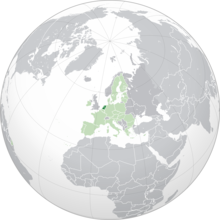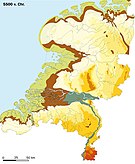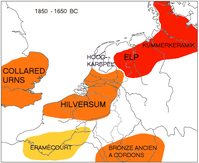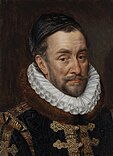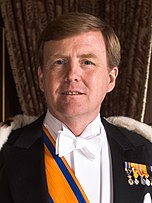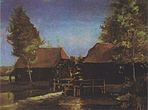Netherlands
Netherlands | |
|---|---|
| Motto: | |
| Anthem: Wilhelmus (Dutch) ("William of Nassau") | |
Location of Netherlands (dark green) – in Europe (light green & dark grey) | |
| Sovereign state | Kingdom of the Netherlands |
| Before independence | Spanish Netherlands |
| Act of Abjuration | 26 July 1581 |
| Peace of Münster | 30 January 1648 |
| United Kingdom of the Netherlands | 16 March 1815 |
| Liberation Day | 5 May 1945 |
| Kingdom Charter | 15 December 1954 |
| Caribbean reorganisation | 10 October 2010 |
| Capital and largest city | Amsterdam[b] 52°22′N 4°53′E / 52.367°N 4.883°E |
| Government seat | The Hague[b] |
| Official languages | Dutch |
Recognised languages | |
| Ethnic groups (2022) |
|
| Religion (2023)[4] |
|
| Demonym(s) | Dutch |
| Government | Unitary parliamentary constitutional monarchy |
• Monarch | Willem-Alexander |
| Dick Schoof | |
| Legislature | States General |
| Senate | |
| House of Representatives | |
| European Parliament | |
| 31 seats | |
| Area | |
• Total | 41,865[5][e] km2 (16,164 sq mi) (134th) |
• Water (%) | 18.41[6] |
| Highest elevation | 887 m (2,910 ft) |
| Population | |
• 29 December 2024 estimate | |
• 2011 census | 16,655,799[8] |
• Density | 520/km2 (1,346.8/sq mi) (33rd) |
| GDP (PPP) | 2024 estimate |
• Total | |
• Per capita | |
| GDP (nominal) | 2024 estimate |
• Total | |
• Per capita | |
| Gini (2021) | low |
| HDI (2022) | very high · 10th |
| Currency | |
| Time zone | [g] |
• Summer (DST) | |
| Driving side | Right |
| Calling code | +31, +599[h] |
| Internet TLD | .nl, .bq[i] |
The Netherlands,[j] informally Holland, is a country in Northwestern Europe, with overseas territories in the Caribbean. It is the largest of the four constituent countries of the Kingdom of the Netherlands.[13] The Netherlands consists of twelve provinces; it borders Germany to the east and Belgium to the south, with a North Sea coastline to the north and west. It shares maritime borders with the United Kingdom, Germany, and Belgium.[14] The official language is Dutch, with West Frisian as a secondary official language in the province of Friesland.[1] Dutch, English, and Papiamento are official in the Caribbean territories.[1]
Netherlands literally means "lower countries" in reference to its low elevation and flat topography, with 26% below sea level.[15] Most of the areas below sea level, known as polders, are the result of land reclamation that began in the 14th century.[16] In the Republican period, which began in 1588, the Netherlands entered a unique era of political, economic, and cultural greatness, ranked among the most powerful and influential in Europe and the world; this period is known as the Dutch Golden Age.[17] During this time, its trading companies, the Dutch East India Company and the Dutch West India Company, established colonies and trading posts all over the world.[18][19]
With a population of over 18 million people, all living within a total area of 41,850 km2 (16,160 sq mi)—of which the land area is 33,500 km2 (12,900 sq mi)—the Netherlands is the 33rd most densely populated country, with a density of 535 people per square kilometre (1,390 people/sq mi). Nevertheless, it is the world's second-largest exporter of food and agricultural products by value, owing to its fertile soil, mild climate, intensive agriculture, and inventiveness.[20][21][22] The four largest cities in the Netherlands are Amsterdam, Rotterdam, The Hague and Utrecht.[23] Amsterdam is the country's most populous city and the nominal capital, though the primary national political institutions are located in the Hague.[24]
The Netherlands has been a parliamentary constitutional monarchy with a unitary structure since 1848. The country has a tradition of pillarisation (separation of citizens into groups by religion and political beliefs) and a long record of social tolerance, having legalised prostitution and euthanasia, along with maintaining a liberal drug policy. The Netherlands allowed women's suffrage in 1919 and was the first country to legalise same-sex marriage in 2001.[25] Its mixed-market advanced economy has the eleventh-highest per capita income globally. The Hague holds the seat of the States General, Cabinet, and Supreme Court.[26] The Port of Rotterdam is the busiest in Europe.[27] Schiphol is the busiest airport in the Netherlands, and the fourth busiest in Europe. Being a developed country, the Netherlands is a founding member of the European Union, eurozone, G10, NATO, OECD, and WTO, as well as a part of the Schengen Area and the trilateral Benelux Union. It hosts intergovernmental organisations and international courts, many of which are in The Hague.[28]
Etymology
Netherlands and the Low Countries
The countries that comprise the region called the Low Countries (Netherlands, Belgium, and Luxembourg) all have comparatively the same toponymy. Place names with Neder, Nieder, Nedre, Nether, Lage(r) or Low(er) (in Germanic languages) and Bas or Inferior (in Romance languages) are in use in low-lying places all over Europe. The Romans made a distinction between the Roman provinces of downstream Germania Inferior (nowadays part of Belgium and the Netherlands) and upstream Germania Superior. Thus, in the case of the Low Countries and the Netherlands, the geographical location of this lower region is more or less downstream and near the sea, compared to that of the upper region of Germania Superior. The designation 'Low' returned in the 10th-century Duchy of Lower Lorraine, which covered much of the Low Countries.[29][30]
The Dukes of Burgundy used the term les pays de par deçà ("the lands over here") for the Low Countries.[31] Under Habsburg rule, this became pays d'embas ("lands down-here").[32] This was translated as Neder-landen in contemporary Dutch official documents.[33] From a regional point of view, Niderlant was also the area between the Meuse and the lower Rhine in the late Middle Ages. From the mid-sixteenth century, the "Low Countries" and the "Netherlands" lost their original deictic meaning.
In most Romance languages, the term "Low Countries" is officially used as the name for the Netherlands.
Holland
The term Holland has frequently been used informally to refer to the whole of the modern country of the Netherlands in various languages,[34] including Dutch[35][36] and English. In some languages, Holland is used as the formal name for the Netherlands. However, Holland is a region within the Netherlands that consists of the two provinces of North and South Holland. Formerly these were a single province, and earlier the County of Holland, which included parts of present-day Utrecht. The emphasis on Holland during the formation of the Dutch Republic, the Eighty Years' War, and the Anglo-Dutch Wars in the 16th, 17th, and 18th centuries, made Holland a pars pro toto for the entire country.[37][38]
Many Dutch people object to the country being referred to as Holland instead of the Netherlands, on much the same grounds as many Welsh or Scottish people object to the United Kingdom being referred to as England.[39] In particular, those from regions other than Holland find it undesirable or misrepresentative to use the term Holland for the whole country,[34] as the Holland region only comprises two of the twelve provinces, and 38% of Dutch citizens. As of 2019, the Dutch government officially has preferred the Netherlands instead of Holland when talking about the country.[40][41][42]
Often Holland or Hollanders is used by the Flemish to refer to the Dutch in the Netherlands,[43] and by the Southern Dutch (Dutch living "below the great rivers", a natural cultural, social and religious boundary formed by the rivers Rhine and Meuse) to refer to the Northern Dutch (Dutch living North of these rivers).[44] In the Southern province of Limburg, the term is used for the Dutch from the other 11 provinces.[45] The use of the term in this context by the Southern Dutch is in a derogatory fashion.[44][45]
Dutch
Dutch is used as the adjective for the Netherlands, as well as the demonym. The origins of the word go back to Proto-Germanic *þiudiskaz, Latinised into Theodiscus, meaning "popular" or "of the people", akin to Old Dutch Dietsch or Old English þeodisc, meaning "(of) the common (Germanic) people".[46] At first, the English language used Dutch to refer to any or all speakers of West Germanic languages. Gradually its meaning shifted to the West Germanic people they had the most contact with.[47]
History
Prehistory (before 800 BC)
The oldest human (Neanderthal) traces in the Netherlands, believed to be about 250,000 years old, were found near Maastricht.[48] At the end of the Ice Age, the nomadic late Upper Palaeolithic Hamburg culture (13,000–10,000 BC) hunted reindeer in the area, using spears. The later Ahrensburg culture (11,200–9,500 BC) used bow and arrow. From Mesolithic Maglemosian-like tribes (c. 8000 BC), the world's oldest canoe was found in Drenthe.[49]
Indigenous late Mesolithic hunter-gatherers from the Swifterbant culture (c. 5600 BC), related to the southern Scandinavian Ertebølle culture, were strongly linked to rivers and open water.[50] Between 4800 and 4500 BC, the Swifterbant people started to adopt from the neighbouring Linear Pottery culture the practice of animal husbandry, and between 4300 and 4000 BC agriculture.[51] The Funnelbeaker culture (4300–2800 BC) erected the dolmens, large stone grave monuments found in Drenthe. There was a quick transition from the Funnelbeaker farming culture to the pan-European Corded Ware pastoralist culture (c. 2950 BC). In the southwest, the Seine-Oise-Marne culture—related to the Vlaardingen culture (c. 2600 BC)—survived well into the Neolithic period, until it too was succeeded by the Corded Ware culture.
The subsequent Bell Beaker culture (2700–2100 BC)[52] introduced metalwork in copper, gold and later bronze and opened new international trade routes, reflected in copper artefacts. Finds of rare bronze objects suggest that Drenthe was a trading centre in the Bronze Age (2000–800 BC). The Bell Beaker culture developed locally into the Barbed-Wire Beaker culture (2100–1800 BC) and later the Elp culture (1800–800 BC),[53] a Middle Bronze Age culture marked by earthenware pottery. The southern region became dominated by the related Hilversum culture (1800–800 BC).
Celts, Germanic tribes and Romans (800 BC–410 AD)
From 800 BC onwards, the Iron Age Celtic Hallstatt culture became influential, replacing the Hilversum culture. Iron ore brought a measure of prosperity and was available throughout the country. Smiths travelled from settlement to settlement with bronze and iron, fabricating tools on demand. The King's grave of Oss (700 BC) was found in a burial mound, the largest of its kind in Western Europe.
The deteriorating climate in Scandinavia from 850 BC and 650 BC might have triggered the migration of Germanic tribes from the North. By the time this migration was complete, around 250 BC, a few general cultural and linguistic groups had emerged.[54][55] The North Sea Germanic Ingaevones inhabited the northern part of the Low Countries. They would later develop into the Frisii and the early Saxons.[55] The Weser–Rhine Germanic (or Istvaeones) extended along the middle Rhine and Weser and inhabited the Low Countries south of the great rivers. These tribes would eventually develop into the Salian Franks.[55] The Celtic La Tène culture (c. 450 BC to the Roman conquest) expanded over a wide range, including the southern area of the Low Countries. Some scholars have speculated that even a third ethnic identity and language, neither Germanic nor Celtic, survived in the Netherlands until the Roman period, the Nordwestblock culture.[56][57]
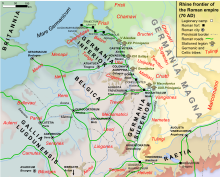
The first author to describe the coast of Holland and Flanders was the geographer Pytheas, who noted in c. 325 BC that in these regions, "more people died in the struggle against water than in the struggle against men."[58] During the Gallic Wars, the area south and west of the Rhine was conquered by Roman forces under Julius Caesar from 57 BC to 53 BC.[57] Caesar describes two main Celtic tribes living in what is now the southern Netherlands: the Menapii and the Eburones. Under Augustus, the Roman Empire would conquer the entirety of the modern day Netherlands, incorporating it into the province of Germania Antiqua in 7 BC, but would be repelled back across the Rhine after the Battle of Teutoburg Forest in 9 AD, with the Rhine becoming fixed as Rome's permanent northern frontier around 12 AD. Notable towns would arise along the Limes Germanicus: Nijmegen and Voorburg. In the first part of Gallia Belgica, the area south of the Limes became part of the Roman province of Germania Inferior. The area to the north of the Rhine, inhabited by the Frisii, remained outside Roman rule, while the Germanic border tribes of the Batavi and Cananefates served in the Roman cavalry.[59] The Batavi rose against the Romans in the Batavian rebellion of 69 AD but were eventually defeated. The Batavi later merged with other tribes into the confederation of the Salian Franks, whose identity emerged in the first half of the third century.[60] Salian Franks appear in Roman texts as both allies and enemies. They were forced by the confederation of the Saxons from the east to move over the Rhine into Roman territory in the fourth century. From their new base in West Flanders and the Southwest Netherlands, they were raiding the English Channel. Roman forces pacified the region but did not expel the Franks, who continued to be feared at least until the time of Julian the Apostate (358) when Salian Franks were allowed to settle as foederati in Texandria.[60]
Early Middle Ages (411–1000)
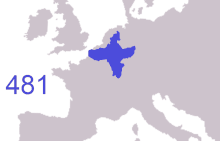
After the Roman government in the area collapsed in roughly the year 406,[61] the Franks expanded their territories into numerous kingdoms. By the 490s, Clovis I had conquered and united all these territories in the southern Netherlands in one Frankish kingdom, and from there continued his conquests into Gaul. During this expansion, Franks migrating to the south (modern territory of France and Walloon part of Belgium) eventually adopted the Vulgar Latin of the local population.[55] A widening cultural divide grew with the Franks remaining in their original homeland in the north (i.e. the southern Netherlands and Flanders), who kept on speaking Old Frankish, which by the ninth century had evolved into Old Low Franconian or Old Dutch.[55] A Dutch-French language boundary hence came into existence.[55][62]
To the north of the Franks, climatic conditions improved, and during the Migration Period Saxons, the closely related Angles, Jutes, and Frisii settled the coast.[63] Many moved on to England and came to be known as Anglo-Saxons, but those who stayed would be referred to as Frisians and their language as Frisian.[63] Frisian was spoken along the entire southern North Sea coast. By the seventh century, a Frisian Kingdom (650–734) under King Aldegisel and King Redbad emerged with Traiectum (Utrecht) as its centre of power,[63][64] while Dorestad was a flourishing trading place.[65][66] Between 600 and around 719 the cities were often fought over between the Frisians and the Franks. In 734, at the Battle of the Boarn, the Frisians were defeated after a series of wars. With the approval of the Franks, the Anglo-Saxon missionary Willibrord converted the Frisian people to Christianity and established the Archdiocese of Utrecht. However, his successor Boniface was murdered by the Frisians in 754.

The Frankish Carolingian empire controlled much of Western Europe. In 843, it was divided into three parts—East, Middle, and West Francia. Most of present-day Netherlands became part of Middle Francia, which was a weak kingdom and subject to numerous partitions and annexation attempts by its stronger neighbours. It comprised territories from Frisia in the north to the Kingdom of Italy in the south. Around 850, Lothair I of Middle Francia acknowledged the Viking Rorik of Dorestad as ruler of most of Frisia. When the kingdom of Middle Francia was partitioned in 855, the lands north of the Alps passed to Lothair II and subsequently were named Lotharingia. After he died in 869, Lotharingia was partitioned, into Upper and Lower Lotharingia, the latter comprising the Low Countries that became part of East Francia in 870. Around 879, another Viking expedition led by Godfrid, Duke of Frisia, raided the Frisian lands. Resistance to the Vikings, if any, came from local nobles, who gained in stature as a result, and that laid the basis for the disintegration of Lower Lotharingia into semi-independent states. One of these local nobles was Gerolf of Holland, who assumed lordship in Frisia, and Viking rule came to an end.[67]
High Middle Ages (1000–1384)
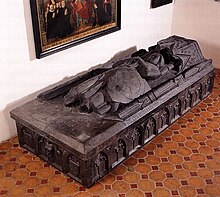
The Holy Roman Empire ruled much of the Low Countries in the 10th and 11th century but was not able to maintain political unity. Powerful local nobles turned their cities, counties and duchies into private kingdoms that felt little sense of obligation to the emperor.[68] Holland, Hainaut, Flanders, Gelre, Brabant, and Utrecht were in a state of almost continual war or paradoxically formed personal unions. As Frankish settlement progressed from Flanders and Brabant, the area quickly became Old Low Franconian (or Old Dutch).
Around 1000 AD, due to several agricultural developments, the economy started to develop at a fast pace, and the higher productivity allowed workers to farm more land or become tradesmen. Towns grew around monasteries and castles, and a mercantile middle class began to develop in these urban areas, especially in Flanders, and later Brabant. Wealthy cities started to buy certain privileges for themselves from the sovereign.
Around 1100 AD, farmers from Flanders and Utrecht began draining and cultivating uninhabited swampy land in the western Netherlands, making the emergence of the County of Holland as the centre of power possible. The title of Count of Holland was fought over in the Hook and Cod Wars between 1350 and 1490. The Cod faction consisted of the more progressive cities, while the Hook faction consisted of the conservative noblemen. These noblemen invited Duke Philip the Good of Burgundy to conquer Holland.[citation needed]
Burgundian, Habsburg and Spanish Habsburg Netherlands (1384–1581)
Most of the Imperial and French fiefs in what is now the Netherlands and Belgium were united in a personal union by Philip the Good in 1433. The House of Valois-Burgundy and their Habsburg heirs would rule the Low Countries from 1384 to 1581. The new rulers defended Dutch trading interests. The fleets of the County of Holland defeated the fleets of the Hanseatic League several times. Amsterdam grew and in the 15th century became the primary trading port in Europe for grain from the Baltic region. Amsterdam distributed grain to the major cities of Belgium, Northern France and England. This trade was vital because Holland could no longer produce enough grain to feed itself. Land drainage had caused the peat of the former wetlands to reduce to a level that was too low for drainage to be maintained.[69]
Under Habsburg Charles V, all fiefs in the current Netherlands region were united into the Seventeen Provinces, which included most of present-day Belgium, Luxembourg, and parts of France and Germany. In 1568, under Phillip II, the Eighty Years' War between the Provinces and their Spanish ruler began. The level of ferocity exhibited by both sides can be gleaned from a Dutch chronicler's report:[70]
On more than one occasion men were seen hanging their own brothers, who had been taken prisoners in the enemy's ranks... A Spaniard had ceased to be human in their eyes. On one occasion, a surgeon at Veer cut the heart from a Spanish prisoner, nailed it on a vessel's prow, and invited the townsmen to come and fasten their teeth in it, which many did with savage satisfaction.
The Duke of Alba attempted to suppress the Protestant movement in the Netherlands. Netherlanders were "burned, strangled, beheaded, or buried alive" by his "Blood Council" and Spanish soldiers. Bodies were displayed along roads to terrorise the population into submission. Alba boasted of having executed 18,600;[71][72] this figure does not include those who perished by war and famine.[73]
The first great siege was Alba's effort to capture Haarlem and thereby cut Holland in half. It dragged on from December 1572 to the next summer, when Haarlemers finally surrendered on 13 July upon the promise that the city would be spared from being sacked. It was a stipulation Don Fadrique was unable to honour, when his soldiers mutinied, angered over pay owed and the miserable conditions of the campaign.[74] On 4 November 1576, Spanish tercios seized Antwerp and subjected it to the worst pillage in the Netherlands' history. The citizens resisted but were overcome; seven thousand were killed and a thousand buildings were torched.[75]
Following the sack of Antwerp, delegates from Catholic Brabant, Protestant Holland and Zeeland agreed to join Utrecht and William the Silent in driving out Spanish troops and forming a new government for the Netherlands. Don Juan of Austria, the new Spanish governor, was forced to concede initially, but within months returned to active hostilities. The Dutch looked for help from the Protestant Elizabeth I of England, but she initially stood by her commitments to the Spanish in the Treaty of Bristol of 1574. When the next large-scale battle occurred at Gembloux in 1578, the Spanish forces won easily.[76] In light of the defeat at Gembloux, the southern states of the Seventeen Provinces distanced themselves from the rebels in the north with the 1579 Union of Arras. Opposing them, the northern half of the Seventeen Provinces forged the Union of Utrecht in which they committed to support each other against the Spanish.[77] The Union of Utrecht is seen as the foundation of the modern Netherlands.[78]
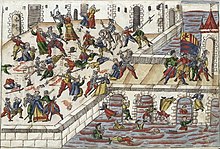
Spanish troops sacked Maastricht in 1579, killing over 10,000 civilians.[79] In 1581, the northern provinces adopted the Act of Abjuration, the declaration of independence in which the provinces officially deposed Philip II.[80] Against the rebels Philip could draw on the resources of the Spanish Empire. Elizabeth I sympathised with the Dutch struggle and sent an army of 7,600 soldiers to aid them.[81] English forces faced the Spanish in the Netherlands under the Duke of Parma in a series of largely indecisive actions that tied down significant numbers of Spanish troops and bought time for the Dutch to reorganise their defences.[82] The war continued until 1648, when Spain under King Philip IV recognised the independence of the seven north-western provinces in the Peace of Münster.[61] Parts of the southern provinces became de facto colonies of the new republican-mercantile empire.[83]
Dutch Republic (1581–1795)

Following the declaration of independence, the provinces of Holland, Zeeland, Groningen, Friesland, Utrecht, Overijssel, and Gelderland entered into a confederation. All these duchies, lordships and counties enjoyed a significant degree of autonomy and was governed by its own administrative body known as the States-Provincial. The confederal government, known as the States General, was headquartered in The Hague and comprised representatives from each of the seven provinces. The sparsely populated region of Drenthe was part of the republic, albeit not considered a province in its own right. Moreover, during the Eighty Years' War, the Republic came to occupy a number of Generality Lands located in Flanders, Brabant and Limburg. These areas were primarily inhabited by Roman Catholics and lacked a distinct governmental structure of their own. They were utilized as a buffer zone between the Republic and the Spanish-controlled Southern Netherlands.[84]


In the Dutch Golden Age, spanning much of the 17th century, the Dutch Empire grew to become one of the major seafaring and economic powers. Science, military and art (especially painting) were among the most acclaimed in the world. By 1650, the Dutch owned 16,000 merchant ships.[85] The Dutch East India Company and the Dutch West India Company established colonies and trading posts all over the world. The Dutch settlement in North America began with the founding of New Amsterdam in 1614. In South Africa, the Dutch settled the Cape Colony in 1652. Dutch colonies in South America were established along the many rivers in the fertile Guyana plains, among them Colony of Surinam (now Suriname). In Asia, the Dutch established a presence in India, the Dutch East Indies (now Indonesia), Formosa (now Taiwan), and the only western trading post in Japan, Dejima.[86] During the period of Proto-industrialisation, the empire received 50% of textiles and 80% of silks import from the India's Mughal Empire.[87][88][89][90]
Many economic historians regard the Netherlands as the first thoroughly capitalist country. In early modern Europe, it had the wealthiest trading city in Amsterdam, and the first full-time stock exchange. The inventiveness of the traders led to insurance and retirement funds as well as phenomena such as the boom-bust cycle, the world's first asset-inflation bubble, the tulip mania of 1636–1637, and the world's first bear raider, Isaac le Maire.[91] In 1672 – known in Dutch history as the Rampjaar (Disaster Year) – the Dutch Republic was attacked by France, England and three German Bishoprics simultaneously, in what would become known as the Franco-Dutch War. At sea, it could successfully prevent the English and French navies from blockading the western shores. On land, however, it was almost taken over by the advancing French and German armies from the east. It managed to turn the tide by inundating parts of Holland.[92]
From 1672 to 1712, the Republic, led by William III of Orange and Anthonie Heinsius would regularly clash with France in what some historians have come to call the Forty Years' War. In the Nine Years' War and the War of the Spanish Succession, the Republic was at the centre of anti-French coalitions. The Dutch ultimately successfully defended the Spanish Netherlands, established a barrier there, and their troops proved central to the alliance which halted French territorial expansion in Europe until a new cycle began in 1792 with the French Revolutionary Wars.[93] However, the wars left them effectively bankrupt, and inflicted permanent damage on the Dutch merchant navy; while they remained the dominant economic power in the Far East, Britain took over as the pre-eminent global commercial and maritime power.[94] Between 1590 and 1713, the United Provinces consistently possessed one of Europe's largest and most capable armies. However, following the conclusion of the War of the Spanish Succession, other major powers such as Prussia, Austria, Britain, and Russia significantly expanded their military forces. The Republic struggled to match these developments, and gradually assumed the status of a mid-tier power. However, historians have sometimes overstated the extent of this decline, especially when considering the period up to the 1750s.[95]
Batavian Republic and Kingdom (1795–1890)
In the 18th century the Dutch Republic had seen a state of a general decline, with economic competition from England and long-standing rivalries between the two main factions in Dutch society, the republican Staatsgezinden and the supporters of the stadtholder the Prinsgezinden as main political factions.[92] With the armed support of revolutionary France, Dutch republicans proclaimed the Batavian Republic, modelled after the French Republic and rendering the Netherlands a unitary state on 19 January 1795. The stadtholder William V of Orange had fled to England. From 1806 to 1810, the Kingdom of Holland was set up by Napoleon Bonaparte as a puppet kingdom governed by his brother Louis Bonaparte. However, King Louis Bonaparte tried to serve Dutch interests instead of his brother's, and he was forced to abdicate on 1 July 1810. The Emperor sent in an army and the Netherlands became part of the French Empire until November 1813, when Napoleon was defeated in the Battle of Leipzig.[96]

William Frederick, son of the last stadtholder, returned to the Netherlands in 1813 and proclaimed himself Sovereign Prince. Two years later, the Congress of Vienna added the southern Netherlands to the north to create a strong country on the northern border of France. William Frederick raised this United Netherlands to the status of a kingdom and proclaimed himself as King William I in 1815.[97] William became hereditary Grand Duke of Luxembourg in exchange for his German possessions. However, the Southern Netherlands had been culturally separate from the north since 1581, and rebelled. The south gained independence in 1830 as Belgium (recognised by the Northern Netherlands in 1839 as the Kingdom of the Netherlands was created by decree), while the personal union between Luxembourg and the Netherlands was severed in 1890, when William III died with no surviving male heirs. Ascendancy laws prevented his daughter Queen Wilhelmina from becoming the next Grand Duchess.[98]
The Belgian Revolution and the Java War in the Dutch East Indies brought the Netherlands to the brink of bankruptcy. However, the Cultivation System was introduced in 1830; in the Dutch East Indies, 20% of village land had to be devoted to government crops for export. The policy brought the Dutch enormous wealth and made the colony self-sufficient.[99] The Netherlands abolished slavery in its colonies in 1863.[100] Enslaved people in Suriname would be fully free only in 1873.[101]
World wars and beyond (1890–present)
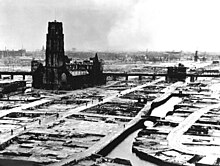
The Netherlands remained neutral during World War I, in part because the import of goods through the Netherlands proved essential to German survival until the blockade by the British Royal Navy in 1916.[102] That changed in World War II, when Germany invaded the Netherlands on 10 May 1940. The Rotterdam Blitz forced most of the Dutch army to surrender. During the occupation, over 100,000 Dutch Jews[103] were transported to Nazi extermination camps; only a few survived. Dutch workers were conscripted for forced labour in Germany, civilians who resisted were killed in reprisal for attacks on German soldiers, and the countryside was plundered for food. Although there were thousands of Dutch who risked their lives by hiding Jews from the Germans, over 20,000 Dutch fascists joined the Waffen SS.[104] Political collaborators were members of the fascist NSB, the only legal political party in the occupied Netherlands. On 8 December 1941, the Dutch government-in-exile in London declared war on Japan,[105] but could not prevent the Japanese occupation of the Dutch East Indies.[106] In 1944–45, the First Canadian Army liberated much of the Netherlands.[107] Soon after VE Day, the Dutch fought a colonial war against the new Republic of Indonesia.[108][109]
Decolonisation
In 1954, the Charter for the Kingdom of the Netherlands reformed the political structure as a result of international pressure to carry out decolonisation. The Dutch colonies of Surinam and Curaçao and Dependencies and the European country all became countries within the Kingdom, on a basis of equality. Indonesia had declared its independence in August 1945. Suriname followed in 1975. The Netherlands was one of the founding members of Benelux and NATO.[110][111] In the 1950s, the Netherlands became one of the six founding countries of the European Communities, following the 1952 establishment of the European Coal and Steel Community, and subsequent 1958 creations of the European Economic Community and European Atomic Energy Community.[112] In 1993, the former two were incorporated into the European Union.[112]
Government-encouraged emigration efforts to reduce population density prompted some 500,000 Dutch to leave the country after the war.[113] The 1960s and 1970s were a time of great social and cultural change, such as rapid de-pillarisation. Students and other youth rejected traditional mores and pushed for change in matters such as women's rights, sexuality, disarmament and environmental issues. In 2002 the euro was introduced as fiat money, and in 2010 the Netherlands Antilles was dissolved. Referendums were held on each island. As a result, Bonaire, Sint Eustatius and Saba (the BES islands) were incorporated as special municipalities upon the dissolution of the Netherlands Antilles. The special municipalities are collectively known as the Caribbean Netherlands.[114]
Geography
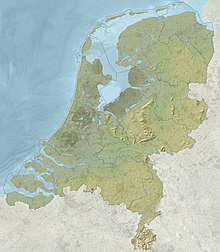
The European Netherlands has a total area of 41,543 km2 (16,040 sq mi), including water bodies, and a land area of 33,481 km2 (12,927 sq mi). The Caribbean Netherlands has a total area of 328 km2 (127 sq mi)[115] It lies between latitudes 50° and 54° N, and longitudes 3° and 8° E.
The Netherlands is geographically very low relative to sea level and is considered a flat country, with about 26% of its area[15] and 21% of its population[116] below sea level. The European part of the country is for the most part flat, with the exception of foothills in the far southeast, up to a height of no more than 322 m (1,056 ft) at the Vaalserberg, and some low hill ranges in the central parts. Most of the areas below sea level are caused by peat extraction or achieved through land reclamation. Since the late 16th century, large polder areas are preserved through elaborate drainage systems that include dikes, canals and pumping stations.
Much of the country was originally formed by the estuaries of three large European rivers: the Rhine (Rijn), the Meuse (Maas) and the Scheldt (Schelde), as well as their tributaries. The south-western part of the Netherlands is a river delta of these rivers, the Rhine–Meuse–Scheldt delta.[117]
The European Netherlands is divided into north and south parts by the Rhine, the Waal, its main tributary branch, and the Meuse. These rivers functioned as a natural barrier between fiefdoms and hence historically created a cultural divide, as is evident in some phonetic traits that are recognisable on either side of what the Dutch call their "Great Rivers" (de Grote Rivieren). Another significant branch of the Rhine, the IJssel river, discharges into Lake IJssel, the former Zuiderzee ('southern sea'). Just like the previous, this river forms a linguistic divide: people to the northeast of this river speak Dutch Low Saxon dialects (except for the province of Friesland, which has its own language).[118]
Geology
The Netherlands is mostly composed of deltaic, coastal and aeolian derived sediments during the Pleistocene glacial and interglacial periods.[118]
Almost the entire west Netherlands is composed of the Rhine-Meuse river estuary. In the east of the Netherlands, remains are found of the last ice age, which ended approximately ten thousand years ago. As the continental ice sheet moved in from the north, it pushed moraine forward. The ice sheet halted as it covered the eastern half of the Netherlands. After the ice age ended, the moraine remained in the form of a long hill-line. The cities of Arnhem and Nijmegen are built on these hills.[119]
Floods
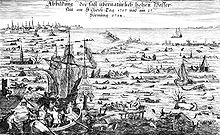
Over the centuries, the Dutch coastline has changed considerably as a result of natural disasters and human intervention.
On 14 December 1287, St. Lucia's flood affected the Netherlands and Germany, killing more than 50,000 people in one of the most destructive floods in recorded history.[120] The St. Elizabeth flood of 1421 and the mismanagement in its aftermath destroyed a newly reclaimed polder, replacing it with the 72 km2 (28 sq mi) Biesbosch tidal floodplains. The huge North Sea flood of February 1953 caused the collapse of several dikes in the southwest Netherlands; more than 1,800 people drowned. The Dutch government subsequently instituted a large-scale programme, the "Delta Works", to protect the country against future flooding, which was completed over a period of more than 40 years.[121]

The impact of disasters was, to an extent, increased through human activity. Relatively high-lying swampland was drained to be used as farmland. The drainage caused the fertile peat to contract and ground levels to drop; groundwater levels were lowered to compensate, causing the underlying peat to contract further. Additionally, until the 19th century peat was mined, dried, and used for fuel, further exacerbating the problem. Even in flooded areas, peat extraction continued through turf dredging.[122]
To guard against floods, a series of defences against the water were contrived. In the first millennium AD, villages and farmhouses were built on hills called terps. Later, these terps were connected by dikes. In the 12th century, local government agencies called "waterschappen" ("water boards") or "hoogheemraadschappen" ("high home councils") started to appear, whose job it was to maintain the water level and to protect a region from floods; these agencies continue to exist. As the ground level dropped, the dikes by necessity grew and merged into an integrated system. By the 13th century windmills had come into use to pump water. The windmills were later used to drain lakes, creating the famous polders.[123] In 1932 the Afsluitdijk ("Closure Dike") was completed, blocking the former Zuiderzee (Southern Sea) from the North Sea and thus creating the IJsselmeer (IJssel Lake). It became part of the larger Zuiderzee Works in which four polders totalling 2,500 square kilometres (965 sq mi) were reclaimed from the sea.[124][125]
The Netherlands is one of the countries that may suffer most from climate change. Not only is the rising sea a problem, but erratic weather patterns may cause the rivers to overflow.[126][127][128]
Delta Works

After the 1953 disaster, the Delta Works was constructed, which is a comprehensive set of civil works throughout the Dutch coast. The project started in 1958 and was largely completed in 1997 with the completion of the Maeslantkering. Since then, new projects have been periodically started to renovate and renew the Delta Works. The main goal of the Delta project was to reduce the risk of flooding in South Holland and Zeeland. This was achieved by raising 3,000 km (1,900 mi) of outer sea-dikes and 10,000 km (6,200 mi) of the inner, canal, and river dikes, and by closing off the sea estuaries of Zeeland. New risk assessments occasionally show problems requiring additional Delta project dike reinforcements. The Delta project is considered by the American Society of Civil Engineers as one of the seven wonders of the modern world.[129]
It is anticipated that global warming will result in a rise in sea level. The Netherlands is actively preparing for a sea-level rise. A politically neutral Delta Commission has formulated an action plan to cope with a sea-level rise of 1.10 m (4 ft) and a simultaneous land height decline of 10 cm (4 in). The plan encompasses the reinforcement of existing coastal defences like dikes and dunes with 1.30 m (4.3 ft) of additional flood protection. Climate change will not only threaten the Netherlands from the coast, but could also alter rainfall patterns and river run-off. To protect the country from river flooding, another programme is already being executed. The Room for the River plan grants more flow space to rivers, protects the major populated areas and allows for periodic flooding of indefensible lands. The few residents who lived in these so-called "overflow areas" have been moved to higher ground, with some of that ground having been raised above anticipated flood levels.[130]
Climate change
The Netherlands is already affected by climate change. The average temperature in the Netherlands rose by more than 2 °C from 1901 to 2020.[131] Climate change has resulted in increased frequency of droughts and heatwaves. Because significant portions of the Netherlands have been reclaimed from the sea or otherwise are very near sea level, the Netherlands is very vulnerable to sea level rise.
The Netherlands has the fourth largest greenhouse gas emissions per capita of the European Union,[132] in part due to the large number of cows.[133] The Dutch government has set goals to lower emissions in the next few decades. The Dutch response to climate change is driven by a number of unique factors, including larger green recovery plans by the European Union in the face of the COVID-19 and a climate change litigation case, State of the Netherlands v. Urgenda Foundation, which created mandatory climate change mitigation through emissions reductions 25% below 1990 levels.[134][135] In 2021 CO2 emissions were down 14% compared to 1990 levels.[136] The goal of the Dutch government is to reduce emissions in 2030 by 49%.[137]
Nature
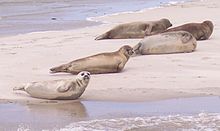
The Netherlands has 21 national parks[138] and hundreds of other nature reserves. Most of these are owned by Staatsbosbeheer, the national department for forestry and nature conservation and Natuurmonumenten, a private organisation that buys, protects and manages nature reserves.[139] The Wadden Sea in the north, with its tidal flats and wetlands, is rich in biological diversity, and is a UNESCO World Heritage Nature Site.[140] The Eastern Scheldt, formerly the northeast estuary of the river Scheldt was designated a national park in 2002, making it the largest national park in the Netherlands at an area of 370 km2 (140 sq mi).
Phytogeographically, the European Netherlands is shared between the Atlantic European and Central European provinces of the Circumboreal Region within the Boreal Kingdom. According to the World Wide Fund for Nature, the European territory of the Netherlands belongs to the ecoregion of Atlantic mixed forests.[141] In 1871, the last old original natural woods were cut down.[142] These woods were planted on anthropogenic heaths and sand-drifts (overgrazed heaths) (Veluwe). The Netherlands had a 2019 Forest Landscape Integrity Index mean score of 0.6/10, ranking it 169th globally out of 172 countries.[143]
Nitrogen pollution is a problem.[133] The number of flying insects in the Netherlands has dropped by 75% since the 1990s.[144]
Caribbean islands
In the Lesser Antilles islands of the Caribbean, the territories of Curaçao, Aruba and Sint Maarten have a constituent country status within the wider Kingdom of the Netherlands. Another three territories which make up the Caribbean Netherlands are designated as special municipalities. The Caribbean Netherlands have maritime borders with Anguilla, Curaçao, France (Saint Barthélemy), Saint Kitts and Nevis, the U.S. Virgin Islands and Venezuela.[145] The islands of the Caribbean Netherlands enjoy a tropical climate with warm weather all year round.[146]

Within this island group:
- Bonaire is part of the ABC islands within the Leeward Antilles island chain off the Venezuelan coast. The Leeward Antilles have a mixed volcanic and coral origin.
- Saba and Sint Eustatius are part of the SSS islands within the Leeward Islands. They are located east of Puerto Rico and the Virgin Islands. The locals (French, Spanish, Dutch and the locally spoken English) consider them part of the Windward Islands, although in the international English language, the Windward Islands refer to other islands further south. These two islands are of volcanic origin and hilly, leaving little ground suitable for agriculture. The highest point is Mount Scenery, 887 m (2,910 ft), on Saba. This is the highest point in the country and in the entire Kingdom of the Netherlands.
Government and politics

The Netherlands has been a constitutional monarchy since 1815 and a parliamentary democracy since 1848. The Netherlands is described as a consociational state. Dutch politics and governance are characterised by an effort to achieve broad consensus on important issues. The Netherlands was ranked as the 17th best electoral democracy in the world by V-Dem Democracy indices in 2023[147] and 9th most democratic country in the world by the Democracy Index (The Economist) in 2022.[148]
The monarch is the head of state, at present King Willem-Alexander of the Netherlands. Constitutionally, the position is equipped with limited powers due to ministerial responsibility.
The executive power is formed by the government that includes the monarch and the Council of Ministers, the deliberative organ of the Dutch cabinet. The cabinet usually consists of 13 to 16 ministers and a varying number of state secretaries. One to three ministers are ministers without portfolio. The council of ministers is presided over by the Prime Minister of the Netherlands, who often is the leader of the largest party of the coalition. The Prime Minister is a primus inter pares, with no explicit powers beyond those of the other ministers. Dick Schoof has been Prime Minister since July 2024, succeeding the longest-serving Prime Minister Mark Rutte.
The cabinet is responsible to the bicameral parliament, the States General, which also has legislative powers. The 150 members of the House of Representatives, the lower house, are elected in direct elections on the basis of party-list proportional representation. These are held every four years, or sooner in case the cabinet falls. The provincial assemblies, the States Provincial, are directly elected every four years as well. The members of the provincial assemblies elect the 75 members of the Senate, the upper house, which has the power to reject laws, but not amend them.[149]
Political culture

Both trade unions and employers organisations are consulted in policymaking in the financial, economic and social areas. They meet regularly with the government in the Social-Economic Council.
The Netherlands has a tradition of social tolerance.[150] In the late 19th century this Dutch tradition of religious tolerance transformed into a system of pillarisation, in which religious groups coexisted separately and only interacted at the level of government.[151] Protection for LGBT and abortion rights are enshrined within the Netherlands' foreign aid policy.[152]
No single party has held a majority in parliament since the 19th century, and as a result, coalition cabinets had to be formed. Since suffrage became universal in 1917, the Dutch political system has been dominated by three families of political parties: Christian Democrats (currently the CDA), Social Democrats (currently the PvdA), and Liberals (currently the VVD). In November 2023, the right-wing populist Party for Freedom of Geert Wilders was the winner of a general election, securing 37 out of 150 seats.[153] A cabinet was inaugurated in July 2024, and Dick Schoof succeeded Mark Rutte as prime minister.[154]
Administrative divisions

The Netherlands is divided into twelve provinces, each under a King's Commissioner. All provinces are divided into municipalities (gemeenten), of which there are 342 (2023).[155]
The country is subdivided into 21 water districts, governed by a water board (waterschap or hoogheemraadschap), each having authority in matters concerning water management.[156][157] The creation of water boards pre-dates that of the nation itself, the first appearing in 1196. The Dutch water boards are among the oldest democratic entities in the world still in existence. Direct elections of the water boards take place every four years.
Within the Dutch town of Baarle-Nassau, are 22 Belgian exclaves[158] and within those are 8 Dutch enclaves.
| Province | Capital | Largest city | Total area (km2)[159] |
Land area (km2)[160] |
Population (2023)[160] |
Density (/km2) |
|---|---|---|---|---|---|---|
| 2,680 | 2,633 | 502,051 | 191 | |||
| 2,412 | 1,410 | 444,701 | 315 | |||
| 5,753 | 3,340 | 659,551 | 197 | |||
| 5,136 | 4,960 | 2,133,708 | 430 | |||
| 2,955 | 2,316 | 596,075 | 257 | |||
| 2,210 | 2,145 | 1,128,367 | 526 | |||
| 5,082 | 4,902 | 2,626,210 | 536 | |||
| 4,092 | 2,663 | 2,952,622 | 1,109 | |||
| 3,421 | 3,317 | 1,184,333 | 357 | |||
| 3,308 | 2,698 | 3,804,906 | 1,410 | |||
| 1,560 | 1,484 | 1,387,643 | 935 | |||
| 2,933 | 1,780 | 391,124 | 220 | |||
| Mainland | 41,543 | 33,647 | 17,811,291 | 529 | ||
The administrative structure on the three BES islands, collectively known as the Caribbean Netherlands, is outside the twelve provinces. These islands have the status of openbare lichamen (public bodies).[161] In the Netherlands these administrative units are often referred to as special municipalities.
| Island | Capital | Area (km2)[162] |
Population (2023)[162] |
Density (/km2) |
|---|---|---|---|---|
| 288 | 24,090 | 84 | ||
| 13 | 2,035 | 157 | ||
| 21 | 3,293 | 157 | ||
| Caribbean Netherlands | 322 | 29,418 | 91 | |
Foreign relations
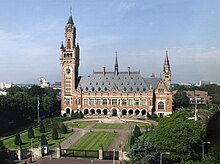
The history of Dutch foreign policy has been characterized by its neutrality. According to the 2024 Global Peace Index, Netherlands is the 18th most peaceful country in the world.[163] Since World War II, the Netherlands has become a member of a large number of international organisations, most prominently the UN, NATO and the EU.
The foreign policy of the Netherlands is based on four basic commitments: to Atlantic co-operation, to European integration, to international development and to international law. One of the more controversial international issues surrounding the Netherlands is its liberal policy towards soft drugs.[164]
The historical ties inherited from its colonial past in Indonesia and Suriname still influence the foreign relations of the Netherlands. Many with heritage from these countries now live permanently in the Netherlands.[165][166]
Military
The Netherlands has one of the oldest standing armies in Europe; it was first established in the late 1500s. After the defeat of Napoleon, the Dutch army was transformed into a conscription army. The Netherlands abandoned its neutrality in 1948 when it signed the Treaty of Brussels, and became a founding member of NATO in 1949. The Dutch military was therefore part of the NATO strength in Cold War Europe. In 1983 the (ceremonial) function of commander of chief of the monarch was transferred to the government, which means the monarch (nominal head of state) has no formal military function. In 1996 conscription was suspended, and the Dutch army was once again transformed into a professional army. Since the 1990s the Dutch army has been involved in the Bosnian War and the Kosovo War, it held a province in Iraq after the defeat of Saddam Hussein, and it was engaged in Afghanistan.[167] The Netherlands has ratified many international conventions concerning war law. The Netherlands decided not to sign the UN treaty on the Prohibition of Nuclear Weapons.[168]
The military is composed of four branches, all of which carry the prefix Koninklijke (Royal):
- Koninklijke Marine (KM), the Royal Netherlands Navy, including the Naval Air Service and Marine Corps;
- Koninklijke Landmacht (KL), the Royal Netherlands Army;
- Koninklijke Luchtmacht (KLu), the Royal Netherlands Air Force;
- Koninklijke Marechaussee (KMar), the Royal Marechaussee (Military Police), tasks include military police and border control.
The submarine service opened to women on 1 January 2017. The Korps Commandotroepen, the Special Operations Force of the Netherlands Army, is open to women, but because of the extremely high physical demands for initial training, it is almost impossible for a woman to become a commando.[169] The Dutch Ministry of Defence employs more than 70,000 personnel, including over 20,000 civilians and over 50,000 military personnel.[170]
Economy
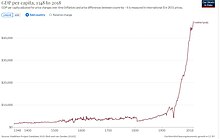
Since the 16th century, shipping, fishing, agriculture, trade, and banking have been leading sectors of the Dutch economy. The Netherlands has a high level of economic freedom. The Netherlands is one of the top countries in the Global Enabling Trade Report (2nd in 2016), and was ranked the fifth most competitive economy in the world by the Swiss International Institute for Management Development in 2017.[171] The country was ranked the 8th most innovative nation in the world in the 2024 Global Innovation Index down from 2nd in 2018.[172][173]
As of 2020[update], the key trading partners of the Netherlands were Germany, Belgium, the United Kingdom, the United States, France, Italy, China and Russia.[6] The Netherlands is one of the world's 10 leading exporting countries. Foodstuffs form the largest industrial sector. Other major industries include chemicals, metallurgy, machinery, electrical goods, trade, services and tourism. Examples of international Dutch companies operating in the Netherlands include Randstad NV, Heineken, KLM, financial services (ING, ABN AMRO, Rabobank), chemicals (DSM, AKZO), petroleum refining (Shell plc), electronic machinery (Philips, ASML), and satellite navigation (TomTom).
The Netherlands has the 17th-largest economy in the world, and ranks 11th in GDP (nominal) per capita. The Netherlands has low income inequality, but wealth inequality is relatively high.[174] Despite ranking 11th in GDP per capita, UNICEF ranked the Netherlands 1st in child well-being in rich countries, both in 2007 and in 2013.[175][176][177]
Amsterdam is the financial and business capital of the Netherlands.[178] The Amsterdam Stock Exchange (AEX), part of Euronext, is the world's oldest stock exchange and is one of Europe's largest bourses. As a founding member of the euro, the Netherlands replaced (for accounting purposes) its former currency, the "gulden" (guilder), on 1 January 1999. Actual euro coins and banknotes followed on 1 January 2002. One euro was equivalent to 2.20371 Dutch guilders. In the Caribbean Netherlands, the United States dollar is used instead.[179] The Netherlands is a "conduit country" that helps to funnel profits from high-tax countries to tax havens.[180] It has been ranked as the 4th largest tax haven in the world.[181]
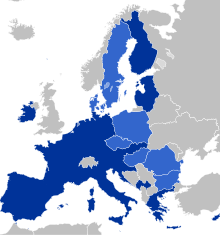
The Dutch location gives it prime access to markets in the United Kingdom and Germany, with the Port of Rotterdam being the largest port in Europe. Other important parts of the economy are international trade, banking and transport. The Netherlands successfully addressed the issue of public finances and stagnating job growth long before its European partners. Amsterdam is the 5th-busiest tourist destination in Europe, with more than 4.2 million international visitors.[182] Since the enlargement of the EU, large numbers of migrant workers have arrived in the Netherlands from Central and Eastern Europe.[183]
The Netherlands continues to be one of the leading European nations for attracting foreign direct investment and is one of the five largest investors in the United States. The economy experienced a slowdown in 2005, but in 2006 recovered to the fastest pace in six years on the back of increased exports and strong investment. The pace of job growth reached 10-year highs in 2007. The Netherlands is the fourth-most competitive economy in the world, according to the World Economic Forum's Global Competitiveness Report.[184]
Energy
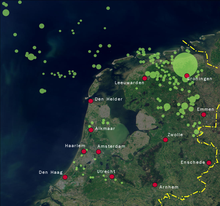

Beginning in the 1950s, the Netherlands discovered huge natural gas resources. The sale of natural gas generated enormous revenues for the Netherlands for decades, adding, over sixty years, hundreds of billions of euros to the government's budget.[186] However, the unforeseen consequences of the country's huge energy wealth impacted the competitiveness of other sectors of the economy, leading to the theory of Dutch disease.[186] The field is operated by government-owned Gasunie and output is jointly exploited by the government, Royal Dutch Shell, and ExxonMobil. Gas production caused earthquakes which damaged housing. After a large public backlash, the government decided to phase out gas production from the field.[187]
The Netherlands has made notable progress in its transition to a carbon-neutral economy. Thanks to increasing energy efficiency, energy demand shows signs of decoupling from economic growth. The share of energy from renewable sources doubled from 2008 to 2019, with especially strong growth in offshore wind and rooftop solar. However, the Netherlands remains heavily reliant on fossil fuels and has a concentration of energy- and emission-intensive industries that will not be easy to decarbonise. Its 2019 Climate Agreement defines policies and measures to support the achievement of Dutch climate targets and was developed through a collaborative process involving parties from across Dutch society.[188] As of 2018, the Netherlands had one of the highest rates of carbon dioxide emissions per person in the European Union.[189]
Agriculture and natural resources
The Netherlands' biocapacity totals only 0.8 global hectares per person in 2016, 0.2 of which are dedicated to agriculture.[190] The Dutch biocapacity per person is just about half of the 1.6 global hectares of biocapacity per person available worldwide.[191] In contrast, in 2016, the Dutch used on average 4.8 global hectares of biocapacity – their ecological footprint of consumption. As a result, the Netherlands was running a biocapacity deficit of 4.0 global hectares per person in 2016.[190] The Dutch waste more food than any other EU citizen, at over three times the EU average.[192]
The Dutch agricultural sector is highly mechanised, and has a strong focus on international exports. It employs about 4% of the Dutch labour force but produces large surpluses in the food-processing industry and accounts for 21% of the Dutch total export value.[193] The Dutch rank first in the European Union and second worldwide in value of agricultural exports, behind only the United States,[194] with agricultural exports earning €80.7 billion in 2014,[195] up from €75.4 billion in 2012.[21] In 2019 agricultural exports were worth €94.5 billion.[196] In an effort to reduce agricultural pollution, the Dutch government is imposing strict limits on the productivity of the farming sector, triggering Dutch farmers' protests.[197]
One-third of the world's exports of chilis, tomatoes, and cucumbers go through the country. The Netherlands exports one-fifteenth of the world's apples.[198] A significant portion of Dutch agricultural exports consists of fresh-cut plants, flowers, and flower bulbs, with the Netherlands exporting two-thirds of the world's total.[198]
Demographics
The Netherlands had an estimated population of 17,947,406 as of 31 November 2023.[199] It is the 6th most densely populated country in Europe and the 33rd most densely populated country in the world with a density of 424 per square kilometre (1,100/sq mi). Between 1900 and 1950, the country's population almost doubled from 5.1 to 10 million. From 1950 to 2000, the population further increased, to 15.9 million.[200]
The fertility rate in the Netherlands is 1.78 children per woman (2018 estimate),[6] which is high compared with many other European countries, but below the rate of 2.1 children per woman required for natural population replacement.[201] The Netherlands has one of the oldest populations in the world, with the average age of 42.7 years.[6] Life expectancy is high in the Netherlands: 84.3 years for newborn girls and 79.7 for boys (2020 estimate).[6] The Dutch are the tallest people in the world, by nationality,[202] with an average height of 1.81 metres (5 ft 11.3 in) for men and 1.67 metres (5 ft 5.7 in) for women in 2009.[203] The average height of young men in the Netherlands increased from 5 feet, 4 inches to approximately 6 feet between the 1850s until the early 2000s.[204]
The country has a migration rate of 1.9 migrants per 1,000 inhabitants per year.[6] The majority of the population of the Netherlands is ethnically Dutch. In 2022, the population was 74.8% ethnically Dutch, 8.3% other European, 2.4% Turkish, 2.4% Moroccan, 2.0% Indonesian, 2.0% Surinamese, and 8.1% others.[3] Some 150,000 to 200,000 people living in the Netherlands are expatriates, mostly concentrated in and around Amsterdam and The Hague, now constituting almost 10% of the population of these cities.[205][206] Significant minorities in the country include Frisians 700,000, Jews 41,000-45,000 and the Roma and the Sinti 40,000.[207]
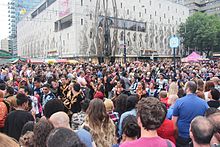
According to Eurostat, in 2010 there were 1.8 million foreign-born residents in the Netherlands, corresponding to 11.1% of the total population. Of these, 1.4 million (8.5%) were born outside the EU and 0.43 million (2.6%) were born in another EU Member State.[208] On 21 November 2016, there were 3.8 million residents in the Netherlands with at least one foreign-born parent.[209] Over half the young people in Amsterdam and Rotterdam have a non-western background.[210] Dutch people, or descendants of Dutch people, are found in migrant communities worldwide, notably in South Africa and the United States.[211][212]
The Randstad is the country's largest conurbation located in the west of the country and contains the four largest cities: Amsterdam in the province North Holland, Rotterdam and The Hague in the province South Holland, and Utrecht in the province Utrecht. The Randstad has a population of about 8.2 million inhabitants[213] and is the 5th largest metropolitan area in Europe. According to Dutch Central Statistics Bureau, in 2015, 28 per cent of the Dutch population had a spendable income above 45,000 euros (which does not include spending on health care or education).[214]
| Rank | Name | Province | Pop. | Rank | Name | Province | Pop. | ||
|---|---|---|---|---|---|---|---|---|---|
 Amsterdam  Rotterdam |
1 | Amsterdam | North Holland | 931,298 | 11 | Apeldoorn | Gelderland | 168,211 |  The Hague  Utrecht |
| 2 | Rotterdam | South Holland | 670,610 | 12 | Haarlem | North Holland | 167,636 | ||
| 3 | The Hague | South Holland | 566,221 | 13 | Arnhem | Gelderland | 167,632 | ||
| 4 | Utrecht | Utrecht | 374,238 | 14 | Haarlemmermeer | North Holland | 163,128 | ||
| 5 | Eindhoven | North Brabant | 246,417 | 15 | Amersfoort | Utrecht | 161,852 | ||
| 6 | Groningen | Groningen | 243,768 | 16 | Enschede | Overijssel | 161,738 | ||
| 7 | Tilburg | North Brabant | 229,836 | 17 | Zaanstad | North Holland | 161,389 | ||
| 8 | Almere | Flevoland | 226,500 | 18 | 's-Hertogenbosch | North Brabant | 160,757 | ||
| 9 | Breda | North Brabant | 188,078 | 19 | Zwolle | Overijssel | 133,141 | ||
| 10 | Nijmegen | Gelderland | 187,049 | 20 | Leeuwarden | Friesland | 128,810 | ||
Language

The official language of the Netherlands is Dutch, which is spoken by the vast majority of inhabitants. The dialects most spoken in the Netherlands are the Brabantian-Hollandic dialects.[217]
Besides Dutch, West Frisian is recognised as a second official language in the northern province of Friesland (Fryslân in West Frisian).[218] West Frisian has a formal status for government correspondence in that province. Four other languages are protected under the European Charter for Regional or Minority Languages.[219] The first of these recognised regional languages is Low Saxon (Nedersaksisch in Dutch). Low Saxon consists of several dialects of the Low German language spoken in the north and east of the Netherlands, like Tweants in the region of Twente, and Drents in the province of Drenthe.
Limburgish is recognised as a regional language. It consists of Dutch varieties of Meuse-Rhenish and is spoken in the south-eastern province of Limburg.[118] Yiddish and the Romani language were recognised in 1996 as non-territorial languages.[220]
English has a formal status in the special municipalities of Saba and Sint Eustatius. It is widely spoken on these islands. Papiamento has a formal status in the special municipality of Bonaire.[220]
The Netherlands has a long tradition of learning foreign languages, formalised in Dutch education laws. Some 90% of the total population are able to converse in English, 70% in German, and 29% in French.[221] English is a mandatory course in all secondary schools.[222] In most lower level secondary school educations (vmbo), one additional modern foreign language is mandatory during the first two years.[223] In higher level secondary schools (havo and vwo), the acquisition of two additional modern foreign language skills is mandatory. Besides English, the standard modern languages are French and German, although schools can replace one of these with Chinese, Spanish, Russian, Italian, Turkish or Arabic.[224] Additionally, schools in Friesland teach and have exams in West Frisian.[225]
Religion
Religious identification in the Netherlands (2020)[226]
Forms of Christianity have dominated religious life in what is now the Netherlands for more than 1,200 years,[227] and by the middle of the sixteenth century the country was strongly Protestant (Calvinist).[228] The population was predominantly Christian until the late 20th century.[229] Although significant religious diversity remains, there has been a decline of religious adherence.[226]
In 2020, Statistics Netherlands found that 55% of the total population declared itself non-religious. Groups that represent the non-religious in the Netherlands include Humanistisch Verbond. Catholics comprised 19.8% of the total population, Protestants (14.4%). Muslims comprised 5.2% of the total population and followers of other Christian denominations and other religions (like Judaism, Buddhism and Hinduism) comprised the remaining 5.1%.[226] A 2015 survey from another source found that Protestants outnumbered Catholics.[230]
The southern provinces of North Brabant and Limburg have historically been strongly Catholic, and some residents consider the Catholic Church as a base for their cultural identity. Protestantism in the Netherlands consists of a number of churches within various traditions. The largest of these is the Protestant Church in the Netherlands (PKN), a united church which is Calvinist and Lutheran in orientation.[231] It was formed in 2004 as a merger of the Dutch Reformed Church, the Reformed Churches in the Netherlands and a smaller Lutheran Church. Several orthodox Calvinist and liberal churches did not merge into the PKN. Although Christianity has become a minority in the Netherlands, it contains a Bible Belt from Zeeland to the northern parts of the province Overijssel, in which Protestant beliefs remain strong. Several Christian religious holidays are national holidays (Christmas, Easter, Pentecost, and the Ascension of Jesus).[232]
Islam is the second largest religion in the state.[233] The Muslim population increased from the 1960 as a result of large numbers of migrant workers. This included migrant workers from Turkey and Morocco, as well as migrants from former Dutch colonies, such as Surinam and Indonesia. During the 1990s, Muslim refugees arrived from countries like Bosnia and Herzegovina, Iran, Iraq, Somalia, and Afghanistan.[234] Since 2000 there has been raised awareness of religion, mainly due to Islamic extremism.[235]
Another religion practised is Hinduism, with around 215,000 adherents (slightly over 1% of the population). Most of these are Indo-Surinamese. There are sizeable populations of Hindu immigrants from India and Sri Lanka, and Western adherents of Hinduism-orientated new religious movements such as Hare Krishnas. The Netherlands has an estimated 250,000 Buddhists or people strongly attracted to this religion, mainly ethnic Dutch people. There are about 30,000 Jews in the Netherlands, though the Institute for Jewish Policy Research estimates range from 30,000 to 63,000, depending on how the number is calculated.[236]
The Constitution of the Netherlands guarantees freedom of education, which means that all schools that adhere to general quality criteria receive the same government funding. This includes schools based on religious principles by religious groups (especially Catholic and Protestant). Three political parties in the Dutch parliament, (CDA, and two small parties, ChristianUnion and SGP) are based upon the Christian belief. Several Christian religious holidays are national holidays (Christmas, Easter, Pentecost and the Ascension of Jesus).[232]
A survey in December 2014 concluded that for the first time there were more atheists (25%) than theists (17%) in the Netherlands, while the remainder of the population was agnostic (31%) or ietsistic (27%).[237] In 2015, a vast majority of the inhabitants of the Netherlands (82%) said they had never or almost never visited a church, and 59% stated that they had never been to a church. Of all the people questioned, 24% saw themselves as atheist, an increase of 11% compared to the previous study done in 2006.[238] The expected rise of spirituality has come to a halt according to research in 2015. In 2006, 40% of respondents considered themselves spiritual; in 2015 this has dropped to 31%. The number who believed in the existence of a higher power fell from 36% to 28% over the same period.[239]
Education
Education in the Netherlands is compulsory between the ages of 5 and 16. If a child does not have a "starting qualification" (HAVO, VWO or MBO 2+ degree) they are still forced to attend classes until they achieve such a qualification or reach the age of 18.[240]
Children in the Netherlands attend elementary school from (on average) ages 4 to 12. It has eight grades and the first is facultative. Based on an aptitude test, the eighth grade teacher's recommendation and the opinion of the pupil's parents or caretakers, a choice is made for one of the three main streams of secondary education.
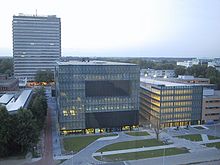
The VMBO has four grades and is subdivided over several levels. Successfully completing the VMBO results in a low-level vocational degree that grants access to the MBO. The MBO (middle-level applied education) is a form of education that primarily focuses on teaching a practical trade or a vocational degree. With the MBO certification, a student can apply for the HBO. The HAVO has 5 grades and allows for admission to the HBO. The HBO (higher professional education) are universities of professional education (applied sciences) that award professional bachelor's degrees; similar to polytechnic degrees. An HBO degree gives access to the university system. The VWO (comprising atheneum and gymnasium) has 6 grades and prepares for studying at a research university. Universities offer a three-year bachelor's degree, followed by a one or two-year master's degree, which in turn can be followed by a doctoral degree programme.
Doctoral candidates in the Netherlands are generally non-tenured employees of a university. All Dutch schools and universities are publicly funded and managed with the exception of religious schools. Dutch universities have a tuition fee of about 2,000 euros a year for students from the Netherlands and the EU, and 15,000 euros for non-EU students.[241]
Healthcare
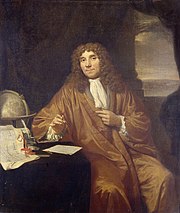
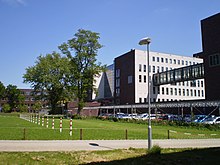
In 2016, the Netherlands maintained its position at the top of the annual Euro Health Consumer Index (EHCI), which compares healthcare systems in Europe, scoring 916 of a maximum 1,000 points. The Netherlands has been among the top three countries in each report published since 2005. On 48 indicators such as patient rights and information, accessibility, prevention and outcomes, the Netherlands secured its top position among 37 European countries for six years in a row.[242] The Netherlands was ranked first in a study in 2009 comparing the health care systems of the United States, Australia, Canada, Germany and New Zealand.[243][244]
According to the Health Consumer Powerhouse (HCP), patients have a great degree of freedom from where to buy their health insurance, to where they get their healthcare. Healthcare decisions are made in dialogue between patients and healthcare professionals.[242] Healthcare in the Netherlands is split 3 ways: in somatic and mental health care and in 'cure' (short term) and 'care' (long term). Home doctors (huisartsen, comparable to general practitioners) form the largest part of the first level. Being referred by a member of the first level is mandatory for access to the second and third level.[245] The health care system is, in comparison to other Western countries[example needed], effective but not the most cost-effective.[246] Healthcare is financed by a dual system that came into effect in January 2006. Long-term treatments, especially those that involve semi-permanent hospitalisation, and disability costs such as wheelchairs, are covered by a state-controlled mandatory insurance. In 2009 this insurance covered 27% of all health care expenses.[247] Other sources of health care payment are taxes (14%), out of pocket payments (9%), additional optional health insurance packages (4%) and a range of other sources (4%).[247] Health insurance in the Netherlands is mandatory. Healthcare in the Netherlands is covered by two statutory forms of insurance:
- Zorgverzekeringswet (ZVW), often called "basic insurance", covers common medical care.
- Algemene Wet Bijzondere Ziektekosten (AWBZ) covers long-term nursing and care.
While Dutch residents are automatically insured by the government for AWBZ, everyone has to buy their own basic healthcare insurance, except those under 18 who are automatically covered under their parents. Insurance companies are obliged to provide a package with a defined set of insured treatments.[248] This insurance covers 41% of all health care expenses.[247] Insurers have to offer a universal package for everyone over 18, regardless of age or state of health – it is illegal to refuse an application or impose special conditions. The funding burden for all short-term health care coverage is carried 50% by employers, 45% by the insured person and 5% by the government. Those on low incomes receive compensation to help them pay their insurance. Premiums paid by the insured are about €135 per month.[249]
Transport
Mobility on Dutch roads has grown continuously since the 1950s and now exceeds 200 billion km travelled per year,[250] three quarters of which are done by car.[251] Around half of all trips in the Netherlands are made by car, 25% by bicycle, 20% walking, and 5% by public transport.[251]
Road transport
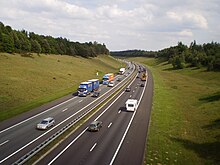
The Netherlands has one of the densest road networks in the world.[252] The Netherlands has a relatively high uptake of electric vehicles, as the government implemented ambitious policy on both charging infrastructure and tax benefits.[253] As of 2019, the Netherlands hosts approximately 30% of all recharging stations in the European Union.[254] Moreover, newly sold cars in the Netherlands have on average the lowest CO2 emissions in the EU.[255]
Public transport

About 13% of all distance is travelled by public transport, the majority of which is by train.[251] The Dutch rail network of 3,013 km route is also rather dense.[256] The network is mostly focused on passenger rail services and connects all major cities, with over 400 stations. Trains are frequent, with two trains per hour on lesser lines,[k] two to four trains per hour on average, and up to eight trains an hour on the busiest lines.[257] The Dutch national train network includes the HSL-Zuid, a high-speed line between the Amsterdam metropolitan area and the Belgian border for trains running from Paris and London, to the Netherlands.
Cycling
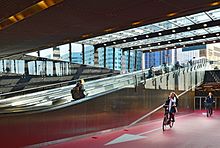
Cycling is a ubiquitous mode of transport. Almost as many kilometres are covered by bicycle as by train.[251] The Dutch are estimated to have at least 18 million bicycles,[258][259] which makes more than one per capita, and twice as many as the circa 9 million motor vehicles on the road.[260] In 2013, the European Cyclists' Federation ranked the Netherlands and Denmark as the most bike-friendly countries in Europe.[261] Cycling infrastructure is extensive. Busy roads have received some 35,000 km of dedicated cycle tracks, physically segregated from motorised traffic.[262] Busy junctions are often equipped with bicycle-specific traffic lights. There are large bicycle parking facilities, particularly in city centres and train stations.[263]
Water transport
The Port of Rotterdam is the largest port in Europe and the largest port outside East Asia, with the rivers Meuse and Rhine providing excellent access to the hinterland upstream. As of 2022[update], Rotterdam was the world's tenth largest container port.[264] The port's main activities are petrochemical industries and general cargo handling and transshipment. The harbour functions as an important transit point for bulk materials and between the European continent and overseas. The Volkeraksluizen between Rotterdam and Antwerp are the biggest sluices for inland navigation in terms of tonnage. In 2007, the Betuweroute, a new fast freight railway from Rotterdam to Germany, was completed. Amsterdam is Europe's 4th largest port. The inland shipping fleet of the Netherlands is the largest in Europe.[265] Passenger boats in the Netherlands includes a ferry network in Amsterdam, and waterbusses and taxis in Rotterdam.[266][267]
Air transport
Schiphol Airport, just southwest of Amsterdam, is the main international airport in the Netherlands, and the third busiest airport in Europe by number of passengers. Schiphol is the main hub for KLM, the nation's flag carrier and the world's oldest airline.[268] In 2016, the Royal Schiphol Group airports handled 70 million passengers.[269] All air traffic is international and Schiphol Airport is connected to over 300 destinations worldwide, more than any other European airport.[270] The airport is a major freight hub as well, processing 1.44 million tonnes of cargo in 2020.[271] Smaller international airports are located in or near Eindhoven, Rotterdam, Maastricht and Groningen. Air transport is of vital significance for the Caribbean part of the Netherlands, with all islands having their own airport. This includes the shortest runway in the world on Saba.[272]
Culture
Art, architecture and philosophy
The Netherlands has had many well-known painters. In the Middle Ages Hieronymus Bosch and Pieter Bruegel the Elder were leading Dutch pioneers. During the Dutch Golden Age, the Dutch Republic was prosperous and witnessed a flourishing artistic movement. The "Dutch Masters", spanning this 17th century era, included Rembrandt, Johannes Vermeer, Jan Steen, and Jacob van Ruisdael. Famous Dutch painters of the 19th and 20th century included Vincent van Gogh and Piet Mondrian.
Literature flourished during the Dutch Golden Age, with Joost van den Vondel and P. C. Hooft as the most famous writers. In the 19th century, Multatuli wrote about the poor treatment of the natives in the Dutch colony. Diary of a Young Girl by Anne Frank is the most translated book from Dutch. Other important 20th century authors include Harry Mulisch, Jan Wolkers, Hella Haasse, Willem Frederik Hermans, Cees Nooteboom and Gerard Reve.
Various architectural styles can be distinguished in the Netherlands. The Romanesque architecture was built between 950 and 1250. Gothic architecture was used from about 1230. Gothic buildings had large windows, pointed arches and were richly decorated. Brabantine Gothic originated with the rise of the Duchy of Brabant and spread throughout the Burgundian provinces. Dutch Baroque architecture (1525–1630) and classicism (1630–1700) is especially evident in the west. Other architectural styles are Art Nouveau, Expressionism, De Stijl, Traditionalism and Brutalism.[273]
Erasmus and Spinoza were famous Dutch philosophers. The Dutch scientist Christiaan Huygens (1629–95) discovered Saturn's moon Titan, argued that light travelled as waves, invented the pendulum clock, and was the first physicist to use mathematical formulae. Antonie van Leeuwenhoek was the first to observe and describe single-celled organisms with a microscope.
Windmills, tulips, clogs, cheese, and cannabis have grown to symbolize the Netherlands, especially among tourists.[274]
Dutch value system
The Dutch are proud of their cultural heritage, rich history in art, and involvement in international affairs.[275] A predominant attitude in the Netherlands is to think of the nation as being "both tolerant and cosmopolitan."[276]
A Dutch saying indicating their sense of national pride in their reclamation of land from the sea and marshes is "God created the world, but the Dutch created the Netherlands."[277]

Dutch manners are open and direct with a no-nonsense attitude—informality combined with adherence to basic behaviour. "Dealing with the Dutch" by Jacob Vossestein states: "Dutch egalitarianism is the idea that people are equal, especially from a moral point of view, and accordingly, causes the somewhat ambiguous stance the Dutch have towards hierarchy and status."[278]
The Netherlands is one of the most secular countries of Europe,[276] and religion in the Netherlands is generally considered as a personal matter which is not supposed to be propagated in public, although it often remains a discussion subject.[279]
Music
The Netherlands has multiple music traditions. Traditional Dutch music is a genre known as "Levenslied", meaning Song of life. These songs typically have a simple melody and rhythm, and a straightforward structure of verses and choruses. Themes can be light, but are often sentimental and include love, death and loneliness. Traditional musical instruments such as the accordion and the barrel organ are a staple of levenslied music, though in recent years many artists use synthesisers and guitars.
Contemporary Dutch rock and pop music (Nederpop) originated in the 1960s, heavily influenced by popular music from the United States and Britain. Bands such as Shocking Blue, Golden Earring, Tee Set, George Baker Selection and Focus enjoyed international success. From the 1980s, more and more pop musicians started working in the Dutch language, partly inspired by the huge success of the band Doe Maar.

Current symphonic metal bands Epica, Delain, ReVamp, The Gathering, Asrai, Autumn, Ayreon and Within Temptation as well as jazz and pop singer Caro Emerald are having international success. Metal bands like Hail of Bullets, God Dethroned, Izegrim, Asphyx, Textures, Heidevolk, and Slechtvalk are popular guests at the biggest metal festivals in Europe. Contemporary local stars include pop singer Anouk, country pop singer Ilse DeLange, Limburgish dialect singing folk band Rowwen Hèze, rock band BLØF and duo Nick & Simon.
Early 1990s Dutch and Belgian house music came together in Eurodance project 2 Unlimited. Selling 18 million records,[280] the two singers in the band are the most successful Dutch music artists to this day. Tracks like "Get Ready for This" are still popular themes of U.S. sports events. In the mid-1990s Dutch language rap and hip hop (Nederhop) came to fruition and has become popular in the Netherlands and Belgium.
Since the 1990s, Dutch electronic dance music (EDM) gained widespread popularity in the world in many forms. Some of the world's best known dance music DJs hail from the Netherlands, including Armin van Buuren, Tiësto, Hardwell, Martin Garrix, Dash Berlin, Julian Jordan, Nicky Romero, W&W, Don Diablo, Ummet Ozcan, Headhunterz, Sander van Doorn, and Afrojack; the first four of which have been ranked as best in the world by DJ Mag Top 100 DJs. The Amsterdam Dance Event (ADE) is the world's leading electronic music conference and the biggest club festival for the many electronic subgenres on the planet.[281][282] The Netherlands has participated in the Eurovision Song Contest since its first edition in 1956, and has won five times.
In classical music, Jan Sweelinck is a famous Dutch composer, with Louis Andriessen among the best known contemporary Dutch classical composers. Ton Koopman is a Dutch conductor, organist and harpsichordist. Notable violinists are Janine Jansen and André Rieu.
Film and television
Some Dutch films – mainly by director Paul Verhoeven – have received international distribution and recognition, such as Turkish Delight ("Turks Fruit", 1973), Soldier of Orange ("Soldaat van Oranje", 1977), Spetters (1980), and The Fourth Man ("De Vierde Man", 1983). Verhoeven then went on to direct big Hollywood movies like RoboCop (1987), Total Recall (1990), and Basic Instinct (1992), and returned with Dutch film Black Book ("Zwartboek", 2006).[283]
Other well-known Dutch film directors are Jan de Bont, Anton Corbijn, Dick Maas, Fons Rademakers, and documentary makers Bert Haanstra and Joris Ivens. Film director Theo van Gogh achieved international notoriety in 2004 when he was murdered by Mohammed Bouyeri in the streets of Amsterdam after directing the short film Submission.[284]
Directors of photography from the Netherlands include Hoyte van Hoytema and Theo van de Sande. Internationally successful Dutch actors include Famke Janssen, Carice van Houten,[285] Rutger Hauer,[286] and Jeroen Krabbé.[287]
The Netherlands has a well developed television market, with both multiple commercial and public broadcasters. Imported TV programmes, as well as interviews with responses in a foreign language, are virtually always shown with the original sound and subtitled. Only foreign shows for children are dubbed.[288]
TV exports from the Netherlands mostly take the form of specific formats and franchises, most notably was the internationally active TV production conglomerate Endemol, founded by Dutch media tycoons John de Mol and Joop van den Ende. Endemol and its subsidiaries created and ran reality, talent, and game show franchises worldwide, including Big Brother and Deal or No Deal.[289] Endemol merged with Shine Group in 2015, and again with Banijay in 2020.[290]
Sports
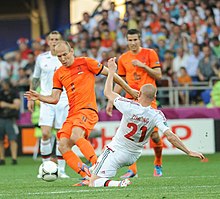
Approximately 4.5 million of the 16.8 million people in the Netherlands are registered in one of the 35,000 sports clubs in the country. About two-thirds of the population between 15 and 75 participate in sports weekly.[291] Football is the most popular team sport, followed by field hockey and volleyball. Tennis, gymnastics and golf are the three most widely engaged in individual sports.[292] Organisation of sports began at the end of the 19th century and beginning of the 20th century. Federations for sports were established, rules were unified and sports clubs came into existence. A Dutch National Olympic Committee was established in 1912.
The national football team was runner-up in the World Cup of 1974, 1978, and 2010, and won the European Championship of 1988. Of SI's 50 greatest footballers of all time, Johan Cruyff (#5), Marco van Basten (#19), Ruud Gullit (#25), and Johan Neeskens (#36) are Dutch.[293] The women's national team was runner-up in 2019 World Cup and won the European Championship of 2017. The Netherlands women's field hockey team won 9 out of 15 World Cups. The Netherlands baseball team have won the European championship 24 times out of 33 events. The volleyball national women's team won the European Championship in 1995 and the World Grand Prix in 2007.
The Netherlands has won 266 medals at the Summer Olympic Games and 110 at the Winter Olympic Games. Joop Zoetemelk won the 1979 Vuelta a Espana, the 1980 Tour de France, and the 1985 UCI World Championship. Jan Janssen won the 1968 Tour de France, Tom Dumoulin the 2017 Giro d'Italia. Max Verstappen, the youngest Formula 1 driver to make his debut and to win a race, was the first Dutchman to win a Grand Prix and a Formula One World Drivers Championship. Dutch K-1 kickboxers have won the K-1 World Grand Prix 15 times out of 19 tournaments.
Cuisine
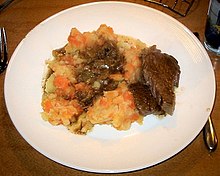
Dutch cuisine is simple and straightforward, and contains many dairy products. Breakfast and lunch are typically bread with toppings, with cereal for breakfast as an alternative. Traditionally, dinner consists of potatoes, meat, and vegetables. The Dutch diet was high in carbohydrates and fat, reflecting the dietary needs of the labourers whose culture moulded the country. During the twentieth century this diet changed and became more cosmopolitan, with most global cuisines being represented in the major cities. In early 2014, Oxfam ranked the Netherlands as the country with the most nutritious, plentiful and healthy food.[294][295] Modern culinary writers distinguish between three regional forms of Dutch cuisine: northeast, west and south:
The regions in the northeast are the least populated areas of the Netherlands. The late 18th century introduction of large scale agriculture means the cuisine is known for its meats. The relative lack of farms allowed for an abundance of game and husbandry, though dishes near the coastal regions include a large amount of fish. The various dried sausages, belonging to the metworst-family of Dutch sausages are found throughout this region. Smoked sausages are common, of which (Gelderse) rookworst is the most renowned. Larger sausages are eaten alongside stamppot, hutspot, or zuurkool (sauerkraut); whereas smaller ones are eaten as a street food. The provinces are home to hard textured rye bread, pastries and cookies. As a coastal region, Friesland is home to low-lying grasslands, and thus has a cheese production in common with the Western cuisine. Cookies are produced in great number and contain a lot of butter and sugar. The traditional alcoholic beverages are beer (strong pale lager) and Jenever, a high proof juniper-flavoured spirit, that came to be known in England as gin. An exception within the traditional Dutch alcoholic landscape, Advocaat, a rich and creamy liqueur made from eggs, sugar and brandy, is native to this region.[296]
In the West, the abundance of water and flat grasslands, mean the area is known for its dairy products, which include prominent cheeses such as Gouda, Leyden (spiced cheese with cumin), and Edam (traditionally in small spheres) as well as Leerdammer and Beemster, while the adjacent Zaanstreek in North Holland has since the 16th century been known for its mayonnaise and typical whole-grain mustards. A by-product of the butter-making process, karnemelk (buttermilk), is considered typical for this region. Seafood such as soused herring, mussels, eels, oysters and shrimps are widely available and typical for the region.
The Southern Dutch cuisine consists of the cuisines of the Dutch provinces of North Brabant and Limburg and the Flemish Region in Belgium. It is renowned for its rich pastries, soups, stews and vegetable dishes. It is the only Dutch culinary region that developed an haute cuisine. Pastries are abundant, often with rich fillings of cream, custard or fruits. Cakes, such as the Vlaai from Limburg and the Moorkop and Bossche Bol from Brabant, are typical pastries. Savoury pastries abound, with the worstenbroodje (a roll with a sausage of ground beef, literally translates into sausage bread) being the most popular. The alcoholic beverage of the region is beer, there are many local brands, ranging from Trappist to Kriek.[297]
See also
Notes
- ^ a b Apart from Dutch, English is an official language in the special municipalities of Saba and Sint Eustatius, Papiamentu is an official language in the special municipality of Bonaire, and West Frisian is an official language in the province of Friesland.[1] Cite error: The named reference "co-official_languages" was defined multiple times with different content (see the help page).
- ^ a b Amsterdam is the constitutional capital, while the government and the royal family are seated in The Hague.
- ^ Having ratified the European Charter for Regional or Minority Languages in 1996, the Dutch government recognises Dutch Low Saxon, Limburgish, Sinte Romani and Yiddish as regional or non-territorial minority languages.[1] On 1 July 2021, Dutch Sign Language received the status of recognised language.[2]
- ^ Includes residents who were born in the Netherlands and whose parents were born in the Netherlands.
- ^ The area of the Netherlands with overseas territories. Metropolitan Netherlands is 41,543 square kilometers
- ^ The euro is used in the European part of the Netherlands and replaced the Dutch guilder in 2002. The United States dollar is used in the Caribbean Netherlands and replaced the Netherlands Antillean guilder in 2011.[12]
- ^ CET and CEST are used in the European Netherlands, and AST is used in the Caribbean Netherlands.
- ^ +599 was the country code designated for the now dissolved Netherlands Antilles. The Caribbean Netherlands still use +599 7 (for Bonaire), +599 3 (for Sint Eustatius), and +599 4 (for Saba).
- ^ .nl is the common internet top-level domain name for the Netherlands. The .eu domain is also used, as it is shared with other European Union member states. .bq is designated, but not in use, for the Caribbean Netherlands.
- ^ Dutch: Nederland [ˈneːdərlɑnt] ⓘ
- ^ Only 11 stations are served less than twice an hour during weekdays.
References
- ^ a b c d e "Welke erkende talen heeft Nederland?" (in Dutch). Rijksoverheid. 11 January 2016. Retrieved 27 December 2017.
- ^ "Besluit van 24 juni 2021 tot vaststelling van het tijdstip van inwerkingtreding van de Wet erkenning Nederlandse Gebarentaal" (PDF). Staatsblad van het Koninkrijk der Nederlanden. 2021. ISSN 0920-2064. Retrieved 1 July 2021.
- ^ a b "How many residents have origins outside the Netherlands". opendata.cbs.nl. March 2023. Retrieved 21 July 2023.
- ^ "Religieuze betrokkenheid; persoonskenmerken". CBS (in English and Dutch). 29 March 2024.
- ^ "Waaruit bestaat het Koninkrijk der Nederlanden? – Rijksoverheid.nl". 19 May 2015.
- ^ a b c d e f "The World Factbook – Netherlands". Central Intelligence Agency. Retrieved 2 February 2021.
- ^ "Bevolkingsteller" (in Dutch). Statistics Netherlands. Retrieved 9 June 2021.
- ^ "Dutch Census 2011 Analysis and Methodology" (PDF). Statistics Netherlands. 19 November 2014. p. 9. Retrieved 9 June 2021.
- ^ a b c d "World Economic Outlook Database, October 2024 Edition. (Netherlands)". www.imf.org. International Monetary Fund. 22 October 2024. Retrieved 22 October 2024.
- ^ "Gini coefficient of equivalised disposable income – EU-SILC survey". ec.europa.eu. Eurostat. Retrieved 25 January 2023.
- ^ "Human Development Report 2023/24" (PDF). United Nations Development Programme. 13 March 2024. p. 288. Retrieved 13 March 2024.
- ^ "Wet geldstelsel BES". Dutch government. 30 September 2010. Retrieved 11 January 2014.
- ^ "Statuut voor het Koninkrijk der Nederlanden" [Charter for the Kingdom of the Netherlands] (in Dutch). Government of the Netherlands. 17 November 2017. Retrieved 11 July 2020.
- ^ "Netherlands boundaries in the North Sea". Ministry of Defence. Archived from the original on 19 August 2014. Retrieved 15 August 2014.
- ^ a b Schiermeier, Quirin (5 July 2010). "Few fishy facts found in climate report". Nature. 466 (170): 170. doi:10.1038/466170a. PMID 20613812.
- ^ How it Works: Science and Technology. Marshall Cavendish. 2003. p. 1208. ISBN 978-0-7614-7323-7.
- ^ "Netherlands – Dutch civilization in the Golden Age (1609–1713)". Encyclopedia Britannica. Retrieved 10 November 2021.
- ^ "Dutch Republic | History & Facts". Encyclopedia Britannica. Retrieved 10 November 2021.
- ^ "History of the Dutch Empire". historyworld.net. Retrieved 10 November 2021.
- ^ Reiley, Laura. "Cutting-edge tech made this tiny country a major exporter of food". Washington Post. Retrieved 23 November 2022.
- ^ a b (RVO), Netherlands Enterprise Agency (17 July 2015). "Agriculture and food". hollandtrade.com. Archived from the original on 1 January 2016. Retrieved 26 August 2016.
- ^ "How the Netherlands Feeds the World". National Geographic Society. September 2017. Retrieved 15 January 2020.
- ^ "Gemeentegrootte en stedelijkheid" (in Dutch). CBS. Retrieved 16 December 2019.
- ^ Dutch Wikisource. "Grondwet voor het Koninkrijk der Nederlanden" [Constitution for the Kingdom of the Netherlands] (in Dutch). Chapter 2, Article 32. Retrieved 3 July 2013.
... de hoofdstad Amsterdam ...
- ^ "Same-Sex Marriage Legalized in Amsterdam". CNN. 1 April 2001. Archived from the original on 3 March 2016. Retrieved 11 March 2016.
- ^ Permanent Mission of the Netherlands to the UN. "General Information". Archived from the original on 5 October 2013. Retrieved 26 June 2013.
- ^ "Rotterdam: the largest freight port in the EU". European Commission. 2 April 2020. Retrieved 25 November 2021.
- ^ van Krieken, Peter J.; David McKay (2005). The Hague: Legal Capital of the World. Cambridge University Press. ISBN 978-90-6704-185-0.
- ^ "Franks". Columbia Encyclopedia. Columbia University Press. 2013. Retrieved 1 February 2014.
- ^ "Lotharingia / Lorraine (Lothringen)". 5 September 2013. Retrieved 1 February 2014.
- ^ Wim Blockmans; Walter Prevenier (3 August 2010). The Promised Lands: The Low Countries Under Burgundian Rule, 1369–1530. University of Pennsylvania Press. pp. 85–. ISBN 978-0-8122-0070-6.
- ^ Elton, Geoffrey Rudolph (1990). The New Cambridge Modern History: Volume 2, The Reformation, 1520–1559. Cambridge University Press. ISBN 978-0-521-34536-1.
- ^ Van der Lem, Anton. "De Opstand in de Nederlanden 1555–1609;De landen van herwaarts over". Archived from the original on 10 October 2017. Retrieved 11 March 2013.
- ^ a b "Holland or the Netherlands?". Dutch Embassy in Sweden. Archived from the original on 27 October 2016. Retrieved 15 December 2012.
- ^ G. Geerts & H. Heestermans, 1981, Groot Woordenboek der Nederlandse Taal. Deel I, Van Dale Lexicografie, Utrecht, p 1105
- ^ "Nederland vs. Holland". holland.com (in Dutch). 11 May 2016. Retrieved 5 February 2023.
Wat is het verschil tussen Holland en Nederland? Nederland bestaat uit de 12 provincies, maar veel mensen gebruiken ook het woord Holland als ze het over Nederland hebben.
- ^ "Telegraph style book: places and peoples". The Daily Telegraph. London. 12 April 2008. Retrieved 31 March 2014.
- ^ "The BBC News Styleguide" (PDF). Archived from the original (PDF) on 27 February 2012. Retrieved 31 March 2014.
- ^ Oostendorp, Marc van (1 June 2018). "Nederland of Holland?". Neerlandistiek (in Dutch). Retrieved 1 September 2023.
- ^ "Wennen aan The Netherlands, want Holland bestaat niet langer". nos.nl (in Dutch). 31 December 2019. Retrieved 1 September 2023.
- ^ margoD (3 September 2020). "Wat is het verschil tussen Holland en Nederland?". When in Holland (in Dutch). Retrieved 1 September 2023.
- ^ Romano, Andrea (7 January 2020). "The Netherlands Will No Longer Be Called Holland". Travel + Leisure. Retrieved 5 February 2022.
- ^ "Het Vlaams woordenboek » hollander". vlaamswoordenboek.be. Retrieved 12 September 2023.
- ^ a b "HOLLANDER – de betekenis volgens Encyclopedie van Noord Brabant". ensie.nl. Retrieved 12 September 2023.
- ^ a b "Limburger vindt 'Hollander' bedreigender dan buitenlander". nos.nl (in Dutch). 25 October 2017. Retrieved 12 September 2023.
- ^ Mallory, J. P.; Adams, D. Q. (2006). The Oxford Introduction to Proto-Indo-European and the Proto-Indo-European World. US: Oxford University Press. ISBN 0-19-929668-5. Archived from the original on 31 August 2021. Retrieved 6 April 2016., p. 269.
- ^ M. Philippa e.a. (2003–2009) Etymologisch Woordenboek van het Nederlands [Duits]
- ^ Roebroeks, Wil; Sier, Mark J.; Nielsen, Trine Kellberg; Loecker, Dimitri De; Parés, Josep Maria; Arps, Charles E. S.; Mücher, Herman J. (7 February 2012). "Use of red ochre by early Neandertals". Proceedings of the National Academy of Sciences. 109 (6): 1889–1894. Bibcode:2012PNAS..109.1889R. doi:10.1073/pnas.1112261109. ISSN 0027-8424. PMC 3277516. PMID 22308348.
- ^ Van Zeist, W. (1957). "De steentijd van Nederland". Nieuwe Drentse Volksalmanak. 75: 4–11.
- ^ Louwe Kooijmans, L.P., "Trijntje van de Betuweroute, Jachtkampen uit de Steentijd te Hardinxveld-Giessendam", 1998, Spiegel Historiael 33, pp. 423–428
- ^ Volkskrant 24 August 2007 "Prehistoric agricultural field found in Swifterbant, 4300–4000 BC Archived 19 September 2009 at the Wayback Machine"
- ^ Fokkens, Harry; Nicolis, Franco, eds. (2012). Background to beakers : inquiries in regional cultural backgrounds to the Bell Beaker complex. Leiden: Sidestone. p. 131. ISBN 978-90-8890-084-6.
- ^ Fokkens, Harry. "The Periodisation of the Dutch Bronze Age: a Critical Review" (PDF). Open Access Leiden University. Faculty of Archaeology, Leiden. Archived from the original (PDF) on 10 October 2017. Retrieved 7 July 2017.
- ^ The New Encyclopædia Britannica, 15th edition, 22:641–642
- ^ a b c d e f de Vries, Jan W., Roland Willemyns and Peter Burger, Het verhaal van een taal, Amsterdam: Prometheus, 2003, pp. 12, 21–27
- ^ Hachmann, Rolf, Georg Kossack and Hans Kuhn, Völker zwischen Germanen und Kelten, 1986, pp. 183–212
- ^ a b Lendering, Jona, "Germania Inferior" Archived 27 October 2016 at the Wayback Machine, Livius.org. Retrieved 6 October 2011.
- ^ Lendering, Jona. "The Edges of the Earth (3) – Livius". livius.org. Retrieved 28 February 2019.
- ^ Roymans, Nico, Ethnic Identity and Imperial Power: The Batavians in the Early Roman Empire, Amsterdam: Amsterdam University Press, 2005, pp 226–227
- ^ a b Previté-Orton, Charles, The Shorter Cambridge Medieval History, vol. I, pp. 51–52, 151
- ^ a b Rietbergen, P. J. A. N. (2000). A Short History of the Netherlands: From Prehistory to the Present Day (4th ed.). Amersfoort: Bekking. p. 158. ISBN 90-6109-440-2. OCLC 52849131.
- ^ Blom, J. C. H. (30 June 2006). History of the Low Countries. Berghahn Books. pp. 6–18. ISBN 978-1-84545-272-8.
- ^ a b c Bazelmans, Jos (2009). "The early-medieval use of ethnic names from classical antiquity: The case of the Frisians". In Derks, Ton; Roymans, Nico (eds.). Ethnic Constructs in Antiquity: The Role of Power and Tradition. Amsterdam: Amsterdam University. pp. 321–337. ISBN 978-90-8964-078-9. Archived from the original on 30 August 2017. Retrieved 3 June 2017.
- ^ Frisii en Frisiaevones, 25–08–02 (Dutch) Archived 3 October 2011 at the Wayback Machine, Bertsgeschiedenissite.nl. Retrieved 6 October 2011
- ^ Willemsen, A. (2009), Dorestad. Een wereldstad in de middeleeuwen, Walburg Pers, Zutphen, pp. 23–27, ISBN 978-90-5730-627-3
- ^ MacKay, Angus; David Ditchburn (1997). Atlas of Medieval Europe. Routledge. p. 57. ISBN 978-0-415-01923-1.
- ^ "Lindisfarne raid I Facts, Summary, & Significance". Encyclopedia Britannica. 1 June 2023. Retrieved 21 June 2023.
- ^ "Louis II | king of the East Franks". Encyclopedia Britannica. Retrieved 21 June 2023.
- ^ "Low Countries | Facts, Map, & History". Encyclopedia Britannica. 31 May 2023. Retrieved 21 June 2023.
- ^ Motley, John (1859). The Rise of the Dutch Republic, Volume 2. pp. 25.
- ^ "Twentieth Century Atlas – Historical Body Count". necrometrics.com.
- ^ Clodfelter, Micheal (9 May 2017). Warfare and Armed Conflicts: A Statistical Encyclopedia of Casualty and Other Figures, 1492–2015, 4th ed. McFarland. p. 16. ISBN 978-0-7864-7470-7. Retrieved 11 November 2020.
- ^ Sharp Hume, Martin Andrew (1901). The Spanish People: Their Origin, Growth and Influence. p. 372.
- ^ Arnade, Peter J. Beggars, Iconoclasts, and Civic Patriots: The Political Culture of the Dutch Revolt. p. 237.
- ^ Durant, Will; Durant, Ariel. The Age of Reason Begins: A History of European Civilization in the Period of Shakespeare, Bacon, Montaigne, Rembrandt, Galileo, and Descartes: 1558–1648. p. 451.
- ^ Gillespie, Alexander (2017). The Causes of War: Volume III: 1400 CE to 1650 CE. Bloomsbury Publishing. p. 131.
- ^ Motley, John Lothrop (1855). The Rise of the Dutch Republic Vol. III, Harper Bros.: New York, p. 411.
- ^ "Union of Utrecht | European history". Encyclopedia Britannica. Retrieved 21 June 2023.
- ^ Nolan, Cathal J. (2006). The Age of Wars of Religion, 1000–1650: An Encyclopedia of Global Warfare and Civilization, Volume 1. Greenwood Publishing Group. p. 247.
- ^ Motley, John Lothrop (1855). The Rise of the Dutch Republic Vol. III, Harper Bros.: New York, p. 508.
- ^ Willson, David Harris (1972). History of England, Holt, Rinehart & Winston: New York, p. 294.
- ^ Ground Warfare: An International Encyclopedia, Volume 1. ABC-CLIO. 2002. p. 45.
- ^ "History of Spain". Encyclopedia Britannica. Retrieved 21 June 2023.
- ^ Prak, Maarten (22 September 2005). The Dutch Republic in the Seventeenth Century: The Golden Age. Cambridge University Press. ISBN 978-1-316-34248-0. p. 66
- ^ "The Middle Colonies: New York". Archived from the original on 14 January 2012. Retrieved 14 January 2012. Digital History.
- ^ "Dutch West India Company | Dutch trading company". Encyclopedia Britannica. Retrieved 21 June 2023.
- ^ Junie T. Tong (2016). Finance and Society in 21st Century China: Chinese Culture Versus Western Markets. CRC Press. p. 151. ISBN 978-1-317-13522-7.
- ^ John L. Esposito, ed. (2004). The Islamic World: Past and Present. Vol. 1. Oxford University Press. p. 174. ISBN 978-0-19-516520-3.
- ^ Nanda, J. N (2005). Bengal: the unique state. Concept Publishing Company. p. 10. 2005. ISBN 978-81-8069-149-2.
Bengal [...] was rich in the production and export of grain, salt, fruit, liquors and wines, precious metals and ornaments besides the output of its handlooms in silk and cotton. Europe referred to Bengal as the richest country to trade with.
- ^ Om Prakash, "Empire, Mughal", History of World Trade Since 1450, edited by John J. McCusker, vol. 1, Macmillan Reference USA, 2006, pp. 237–240, World History in Context. Retrieved 3 August 2017
- ^ Sayle, Murray (5 April 2001). "Japan Goes Dutch". London Review of Books. Vol. 23, no. 7. pp. 3–7.
- ^ a b Koopmans, Joop W. (5 November 2015). Historical Dictionary of the Netherlands. Rowman & Littlefield. p. 233. ISBN 978-1-4422-5593-7.
- ^ Van Nimwegen 2020, p. 354.
- ^ Elliott 2014, p. 8.
- ^ Israel 1995, pp. 985–986.
- ^ Van Der Burg, Martijn (19 January 2024). "Introduction: Napoleonic Governance and the Integration of Europe". Napoleonic Governance in the Netherlands and Northwest Germany: Conquest, Incorporation, and Integration. War, Culture and Society, 1750 –1850. Springer. pp. 1–22. doi:10.1007/978-3-030-66658-3_1. ISBN 978-3-030-66658-3.
- ^ "History of France". Encyclopedia Britannica. Retrieved 21 June 2023.
- ^ "William I | king of The Netherlands". Encyclopedia Britannica. 2 June 2023. Retrieved 21 June 2023.
- ^ "Belgium – Industrial Revolution, Belgian Revolution, and Unionist Coalition". Encyclopedia Britannica. Retrieved 21 June 2023.
- ^ Finkelman and Miller, Macmillan Encyclopedia of World Slavery 2:637
- ^ "Dutch involvement in the transatlantic slave trade and abolition". ascleiden.nl. 24 June 2013.
- ^ Abbenhuis, Maartje M. (2006) The Art of Staying Neutral. Amsterdam University Press, ISBN 978-90-5356-818-7.
- ^ "93 trains". Archived from the original on 7 December 2004. Retrieved 7 December 2004.. kampwesterbork.nl
- ^ "Nederlanders in de Waffen-SS". waffen-ss.nl. Archived from the original on 2 December 2015. Retrieved 13 November 2015.
- ^ "The Kingdom of the Netherlands declares war with Japan". ibiblio. Retrieved 2 October 2009.
- ^ Library of Congress, 1992, "Indonesia: World War II and the Struggle For Independence, 1942–50; The Japanese Occupation, 1942–45" Access date: 9 February 2007.
- ^ Video: Allies Set For Offensive. Universal Newsreel. 1944. Retrieved 21 February 2012.
- ^ "Sukarno | Indonesian Nationalist & 1st President of Indonesia". Encyclopedia Britannica. 17 June 2023. Retrieved 21 June 2023.
- ^ "History of the Netherlands". Encyclopedia Britannica. Retrieved 21 June 2023.
- ^ "The Benelux". gouvernement.lu. 4 January 2018. Retrieved 21 November 2022.
- ^ "Member countries". NATO. Retrieved 21 November 2022.
- ^ a b "The Netherlands: EU member state – European Union – Government.nl". government.nl. 26 September 2012. Retrieved 21 November 2022.
- ^ "Netherlands". Encyclopædia Britannica Online. Encyclopædia Britannica, Inc. Retrieved 8 September 2012.
- ^ Grommé, Francisca (2021). ""Thinking, seeing, and doing like a kingdom: The making of Caribbean Netherlands statistics and the 'native Bonairian'". Equaliberty in the Dutch Caribbean: Ways of Being Non/Sovereign. pp. 101–117. doi:10.36019/9781978818705-008. ISBN 978-1-9788-1870-5.
- ^ Central Bureau of Statistics (2009). "Land – en tuinbouwcijfers" (PDF) (in Dutch). Government of the Netherlands, Department of Publication and Information. p. 14. ISSN 1386-9566. Retrieved 6 January 2018.
- ^ "Milieurekeningen 2008" (PDF). Centraal Bureau voor de Statistiek. Archived from the original (PDF) on 15 February 2010. Retrieved 4 February 2010.
- ^ de Haas, Tjalling; van der Valk, Lambertus; Cohen, Kim M.; Pierik, Harm Jan; Weisscher, Steven A. H.; Hijma, Marc P.; van der Spek, Ad J. F.; Kleinhans, Maarten G. (February 2019). "Long-term evolution of the Old Rhine estuary: Unravelling effects of changing boundary conditions and inherited landscape". The Depositional Record. 5 (1): 84–108. Bibcode:2019DepRe...5...84D. doi:10.1002/dep2.56. ISSN 2055-4877. PMC 6743690. PMID 31543980.
- ^ a b c Welschen, Ad: Course Dutch Society and Culture, International School for Humanities and Social Studies ISHSS, Universiteit van Amsterdam, 2000–2005.
- ^ Wong, Th.E.; Batjes, D.A.J.; Jager, J. de (2007). Geology of the Netherlands. KNAW. ISBN 978-90-6984-481-7.
- ^ Zuiderzee floods (Netherlands history). Britannica Online Encyclopedia.
- ^ Rietveld, Ronald (8 June 2017). "Dutch Delta Works: from engineering feat to cultural statement".
- ^ "Netherlands : Fugros Ground Investigation Links Dutch Subsidence to Former Peat Extraction". MENA Report. 20 September 2021.
- ^ "Windmills in Dutch History". Let.rug.nl. Rijks Universiteit Groningen. Archived from the original on 5 July 2017. Retrieved 7 July 2017.
- ^ "Kerngegevens gemeente Wieringermeer". sdu.nl. Archived from the original on 6 January 2008. Retrieved 21 January 2008.
- ^ "Kerngegevens procincie Flevoland". sdu.nl. Archived from the original on 26 December 2007. Retrieved 21 January 2008.
- ^ Nickerson, Colin (5 December 2005). "Netherlands relinquishes some of itself to the waters". The Boston Globe. Archived from the original on 30 June 2006. Retrieved 10 October 2007.
- ^ Olsthoorn, A.A.; Richard S.J. Tol (February 2001). Floods, flood management and climate change in The Netherlands. Institute for Environmental Studies, Vrije Universiteit. OCLC 150386158. Archived from the original on 22 October 2007. Retrieved 10 October 2007.
- ^ Tol, Richard S. J.; van der Grijp, Nicolien; Olsthoorn, Alexander A.; van der Werff, Peter E. (2003). "Adapting to Climate: A Case Study on Riverine Flood Risks in the Netherlands" (PDF). Risk Analysis. 23 (3): 575–583. Bibcode:2003RiskA..23..575T. doi:10.1111/1539-6924.00338. hdl:1871/31872. PMID 12836850. S2CID 1054016.
- ^ Seven Wonders Archived 2 August 2010 at the Wayback Machine. Asce.org (19 July 2010). Retrieved on 21 August 2012.
- ^ Kimmelman, Michael (13 February 2013). "Going With the Flow". The New York Times. Archived from the original on 14 February 2013. Retrieved 19 February 2013.
- ^ Koninklijk Nederlands Meteorologisch Instituut (2021). Klimaatsignaal 21: hoe het klimaat in Nederland snel verandert (PDF) (in Dutch). De Bilt: KNMI. p. 11.
- ^ "EEA greenhouse gases — data viewer — European Environment Agency". European Environment Agency. Retrieved 4 April 2023.
- ^ a b "The cucumber Saudis: how the Dutch got too good at farming". The Economist. ISSN 0013-0613. Archived from the original on 23 March 2023. Retrieved 4 April 2023.
- ^ "Netherlands climate change: Court orders bigger cuts in emissions". BBC. 20 December 2019.
- ^ "Activists cheer victory in landmark Dutch climate case". Associated Press. 20 December 2019.
- ^ Statistiek, Centraal Bureau voor de. "Hoe groot is onze broeikasgasuitstoot?". Centraal Bureau voor de Statistiek (in Dutch). Retrieved 9 July 2023.
- ^ "Long-term strategy on climate mitigation – The Netherlands" (PDF). unfccc. 2019. Retrieved 16 May 2021.
- ^ "Home". Nationaal Park (in Dutch). Retrieved 27 January 2023.
- ^ "Over Natuurmonumenten". Natuurmonumenten.
- ^ "Wadden Sea". UNESCO World Heritage Centre. Retrieved 27 January 2023.
- ^ Dinerstein, Eric; et al. (2017). "An Ecoregion-Based Approach to Protecting Half the Terrestrial Realm". BioScience. 67 (6): 534–545. doi:10.1093/biosci/bix014. ISSN 0006-3568. PMC 5451287. PMID 28608869.
- ^ "Beekbergerwoud - Natuurgebied". Natuurmonumenten (in Dutch). Retrieved 13 June 2022.
- ^ Grantham, H. S.; et al. (2020). "Anthropogenic modification of forests means only 40% of remaining forests have high ecosystem integrity – Supplementary Material". Nature Communications. 11 (1): 5978. Bibcode:2020NatCo..11.5978G. doi:10.1038/s41467-020-19493-3. ISSN 2041-1723. PMC 7723057. PMID 33293507.
- ^ Malo, Paul (18 November 2019). "Les insectes sont bel et bien en train de disparaître" [Insects are well and truly disappearing]. consoglobe.com (in French).
- ^ "Maritime boundaries of the Caribbean part of the Kingdom". Ministry of Defence. 15 November 2017. Retrieved 5 August 2020.
- ^ Biasutti, Michela; Sobel, Adam H.; Camargo, Suzana J.; Creyts, Timothy T. (1 June 2012). "Projected changes in the physical climate of the Gulf Coast and Caribbean". Climatic Change. 112 (3): 819–845. Bibcode:2012ClCh..112..819B. doi:10.1007/s10584-011-0254-y. ISSN 1573-1480. S2CID 8304158.
- ^ Coppedge, Michael, John Gerring, Carl Henrik Knutsen, Staffan I. Lindberg, Jan Teorell, Nazifa Alizada, David Altman, Michael Bernhard, Agnes Cornell, M. Steven Fish, Lisa Gastaldi, Haakon Gjerløw, Adam Glynn, Allen Hicken, Garry Hindle, Nina Ilchenko, Joshua Krusell, Anna Lührmann, Seraphine F. Maerz, Kyle L. Marquardt, Kelly McMann, Valeriya Mechkova, Juraj Medzihorsky, Pamela Paxton, Daniel Pemstein, Josefine Pernes, Johannes von Römer, Brigitte Seim, Rachel Sigman, Svend-Erik Skaaning, Jeffrey Staton, Aksel Sundström, Eitan Tzelgov, Yi-ting Wang, Tore Wig, Steven Wilson and Daniel Ziblatt. 2021. "V-Dem [Country–Year/Country–Date] Dataset v11.1" Varieties of Democracy (V-Dem) Project. https://doi.org/10.23696/vdemds21.
- ^ "Democracy Index 2022: Frontline democracy and the battle for Ukraine" (PDF). Economist Intelligence Unit. 2023. p. 3.
- ^ Zaken, Ministerie van Algemene (12 October 2011). "The House of Representatives and Senate – Parliament – Government.nl". government.nl.
- ^ Buruma, Ybo (2007). "Dutch Tolerance: On Drugs, Prostitution, and Euthanasia". Crime and Justice. 35 (1): 73–113. doi:10.1086/650185. ISSN 0192-3234. JSTOR 10.1086/650185. S2CID 144295342.
- ^ Kaplan, Benjamin J. (5 September 2019). "Dutch" Religious Tolerance: Celebration and Revision. Brill. ISBN 978-90-04-35395-4.
- ^ "Feminist foreign policy explained". Government of the Netherlands. 18 November 2022. Retrieved 8 September 2023.
- ^ "Verkiezingsuitslag definitief: D66 grijpt net naast tiende zetel, PVV blijft op 37" [Final election results: D66 barely misses tenth seat, PVV stays at 37]. NU.nl (in Dutch). 1 December 2023. Retrieved 3 July 2024.
- ^ "Ministers en staatssecretarissen kabinet-Schoof beëdigd" [Ministers and state secretaries of Schoof cabinet sworn in]. NOS (in Dutch). 2 July 2024. Retrieved 2 July 2024.
- ^ "Gemeentelijke indeling op 1 januari 2023" [Municipalities on 1 January 2021]. CBS Classifications (in Dutch). CBS. Retrieved 16 January 2023.
- ^ "De waterschappen" (in Dutch). Archived from the original on 3 November 2013. Retrieved 7 June 2013.
- ^ "Mijn waterschap" (in Dutch). Retrieved 6 May 2021.
- ^ "Baarle-Hertog and Baarle Nassau". Exclave.eu. Retrieved 21 November 2016.
- ^ "Oppervlakte". Archived from the original on 4 May 2021. Retrieved 10 January 2020.
- ^ a b "Netherlands : Major Urban Centers". City Population. 15 September 2022. Retrieved 28 October 2023.
- ^ "31.954, Wet openbare lichamen Bonaire, Sint Eustatius en Saba" (in Dutch). Eerste kamer der Staten-Generaal. Retrieved 15 October 2010.
De openbare lichamen vallen rechtstreeks onder het Rijk omdat zij geen deel uitmaken van een provincie.
"Through the establishment of the BES islands as public bodies, rather than communities, the BES islands' rules may deviate from the rules in the European part of the Netherlands. The Dutch legislation will be introduced gradually. The public bodies fall directly under the central government because they are not part of a province." - ^ a b "Caribbean Netherlands". City Population. 23 July 2023. Retrieved 28 October 2023.
- ^ "2024 Global Peace Index" (PDF).
- ^ "Drug Kingpin Trial 'Ultimate Test' for Dutch Rule of Law". VOA. Agence France-Presse. 21 December 2022. Retrieved 18 July 2023.
- ^ "Suriname". Central Intelligence Agency. 6 December 2023 – via CIA.gov.
- ^ "Indonesian political exiles in the Netherlands after 1965; Postcolonial nationalists in an era of transnationalism".
- ^ Dimitriu, George; de Graaf (September 2010). "The Dutch COIN Approach: Three years in Uruzgan". Small Wars & Insurgencies. 21 (3): 429–458. doi:10.1080/09592318.2010.505471. hdl:1887/16536. S2CID 144724148.
- ^ "Red Cross urges Netherlands to sign UN nuclear weapons ban". NL Times. 11 February 2019.
- ^ KCT. Official website of the Dutch Commando Foundation Archived 5 February 2011 at the Wayback Machine. Korpscommandotroepen.nl (14 April 2010). Retrieved on 21 August 2012.
- ^ "Ministerie van defensie – Werken bij Defensie". Mindef.nl. Archived from the original on 11 August 2011. Retrieved 29 April 2010.
- ^ "The 2017 IMD World Competitiveness Ranking" (PDF). 4 June 2017. Archived from the original (PDF) on 4 June 2017. Retrieved 3 August 2017.
- ^ World Intellectual Property Organization (2024). Global Innovation Index 2024: Unlocking the Promise of Social Entrepreneurship. World Intellectual Property Organization. p. 18. doi:10.34667/tind.50062. ISBN 978-92-805-3681-2. Retrieved 6 October 2024.
{{cite book}}:|website=ignored (help) - ^ Cornell University, INSEAD, and WIPO (2018): The Global Innovation Index 2018: Energizing the World with Innovation. Ithaca, Fontainebleau and Geneva
- ^ Bavel, Bas Van; Frankema, Ewout (22 June 2017). "Wealth Inequality in the Netherlands, c. 1950–2015. The Paradox of a Northern European Welfare State". TSEG – the Low Countries Journal of Social and Economic History. 14 (2): 29–62. doi:10.18352/tseg.916. ISSN 2468-9068.
- ^ Chai, Barbara. "This is why Dutch kids are much happier than American children". Marketwatch. Retrieved 3 August 2017.
- ^ "Child Poverty in Perspective: An overview of child well-being in rich countries" (PDF). UNICEF. 2007. Archived from the original (PDF) on 3 September 2019. Retrieved 14 September 2007.
- ^ "Child well-being in rich countries — UNICEF" (PDF). Unicef-irc.org. 2013. Retrieved 3 August 2017.
- ^ "Amsterdam – Economische Zaken" (in Dutch). Archived from the original on 5 December 2008. Retrieved 22 May 2008.
- ^ "Memorie van toelichting – Regels met betrekking tot het geldstelsel van de openbare lichamen Bonaire, Sint Eustatius en Saba (Wet geldstelsel BES) – Parlementaire monitor". parlementairemonitor.nl. Retrieved 28 January 2023.
- ^ Schindler, Dirk (28 January 2022). "Is the Netherlands Still a Tax Haven?". Erasmus University Rotterdam. Retrieved 2 April 2023.
- ^ "Corporate Tax Haven Index". Tax Justice Network. 2021. Retrieved 2 April 2023.
- ^ "Amsterdam en de wereld: Toerisme en congreswezen". Archived from the original on 15 February 2009. Retrieved 15 February 2009.. ez.amsterdam.nl
- ^ Kreijger, Gilbert (10 February 2012). "Dutch allow Wilders' anti-Pole website, EU critical". Reuters. Archived from the original on 1 January 2016.
- ^ "Global Competitiveness Report 2012–2013". World Economic Forum. 5 September 2012. Archived from the original on 10 December 2014. Retrieved 11 June 2013.
- ^ "The Netherlands's Effort to Phase Out and Rationalise its Fossil-Fuel Subsidies" (PDF).
- ^ a b "The Dutch curse: how billions from natural gas went up in smoke". NRC Handelsblad. 17 June 2009. Archived from the original on 21 December 2016.
- ^ The Netherlands 2020: Energy Policy Review (PDF) (Report). International Energy Agency. September 2020. p. 11.
- ^ The Netherlands 2020: Energy Policy Review (PDF) (Report). International Energy Agency. September 2020. p. 3.
 Text was copied from this source, which is available under a Creative Commons Attribution 4.0 International License
Text was copied from this source, which is available under a Creative Commons Attribution 4.0 International License
- ^ "Fossil CO2 emissions of all world countries – 2018 Report". EU Science Hub. 2018. Retrieved 21 October 2019.
- ^ a b "Country Trends". Global Footprint Network. Retrieved 15 November 2019.
- ^ Lin, David; Hanscom, Laurel; Murthy, Adeline; Galli, Alessandro; Evans, Mikel; Neill, Evan; Mancini, Maria Serena; Martindill, Jon; Medouar, Fatime-Zahra; Huang, Shiyu; Wackernagel, Mathis (2018). "Ecological Footprint Accounting for Countries: Updates and Results of the National Footprint Accounts, 2012–2018". Resources. 7 (3): 58. doi:10.3390/resources7030058.
- ^ "Food waste: the problem in the EU in numbers". EU parliament. 2017. Retrieved 18 January 2021.
- ^ "Factsheet Agri-food: Holland is a world-leading supplier of sustainable, healthy, agri-food products". Hollandalumni.nl. Archived from the original on 10 October 2017. Retrieved 3 August 2017.
- ^ "Farming in the Netherlands: Polder and wiser". The Economist. Sevenum. 23 August 2014. Archived from the original on 20 August 2022. Retrieved 29 August 2014.
- ^ "Dutch agricultural exports top 80 billion Euros". 16 January 2015.
- ^ Ministerie van Landbouw, Natuur en Voedselkwaliteit (17 January 2020). "Dutch agricultural exports worth €94.5 billion in 2019". government.nl.
- ^ Corder, Mike (8 July 2022). "Why are Dutch farmers protesting over emissions?". The Journal. Retrieved 8 July 2022.
- ^ a b "Netherlands: Agricultural situation" (PDF). USDA Foreign Agriculture Service. Archived from the original (PDF) on 19 June 2007. Retrieved 20 June 2007.
- ^ "Population dynamics; month and year" (in Dutch). Statistics Netherlands. 4 January 2024. Retrieved 11 January 2024.
- ^ CBS Statline – Population; history. Statistics Netherlands. Retrieved on 8 March 2009.
- ^ Max Roser (2014). "Total Fertility Rate around the world over the last centuries". Our World In Data, Gapminder Foundation. Archived from the original on 7 August 2018. Retrieved 7 May 2019.
- ^ Enserink, Martin (7 April 2015). "Did natural selection make the Dutch the tallest people on the planet?". Science. Amsterdam. Retrieved 9 April 2015.
- ^ "Reported health and lifestyle". Centraal Bureau voor de Statistiek. Retrieved 12 August 2012.
- ^ Fogel, Robert (2004). The Escape from Hunger and Premature Death, 1700—2100. Cambridge University Press. p. 41.
- ^ "Expats in Nederland". Archived from the original on 19 October 2014.
- ^ "Feiten en cijfers over immigratie – Pagina 5". Ons Amsterdam. Archived from the original on 18 June 2018. Retrieved 30 June 2014.
- ^ "Netherlands - World Directory of Minorities & Indigenous Peoples". 19 June 2015.
- ^ Vasileva, Katya (2011) 6.5% of the EU population are foreigners and 9.4% are born abroad Archived 28 January 2012 at the Wayback Machine, Eurostat, Statistics in focus vol. 34.
- ^ "Migration background still plays a role". Centraal Bureau voor de Statistiek (CBS). 21 November 2016.
- ^ Half of young big-city dwellers have non-western background
- ^ American FactFinder, United States Census Bureau. "Census 2006 ACS Ancestry estimates". Factfinder.census.gov. Archived from the original on 28 April 2011. Retrieved 29 April 2010.
- ^ South Africa – Afrikaans Speakers. Library of Congress.
- ^ "CBS Statline". opendata.cbs.nl.
- ^ "CBS – Income distribution – Extra". www.cbs.nl. Archived from the original on 30 September 2015. Retrieved 15 September 2015.
- ^ "CBS Statline". opendata.cbs.nl. 1 January 2024.
- ^ Data taken from an EU survey. ebs_243_en.pdf (europa.eu)
- ^ "Hoeveel dialecten heeft het Nederlands? | Taalcanon". Taalcanon.nl. Retrieved 23 April 2014.
- ^ "Talen in Nederland – Erkende talen". rijksoverheid.nl. Retrieved 12 August 2014.
- ^ "Languages". CIA – The World Factbook. Retrieved 8 January 2023.
- ^ a b "The Kingdom of the Netherlands further declares that the principles enumerated in Part II of the Charter will be applied to the Lower-Saxon languages used in the Netherlands, and, in accordance with Article 7, paragraph 5, to Yiddish and the Romanes languages." Netherlands: Declaration contained in the instrument of acceptance, deposited on 2 May 1996 – Or. Engl. Archived 22 May 2012 at the Wayback Machine, List of declarations made with respect to treaty No. 148 – European Charter for Regional or Minority Languages
- ^ "European Union survey" (PDF). Ec.europa.eu. Archived from the original (PDF) on 28 January 2007. Retrieved 3 August 2017.
- ^ "Foreign languages in secondary education". Wat is het aanbod aan vreemde talen in de onderbouw van het voortgezet onderwijs (vo)? (in Dutch). Rijksoverheid. Archived from the original on 29 April 2011. Retrieved 3 May 2010.
- ^ Schedule of the Central Exams of 2009 Archived 20 August 2016 at the Wayback Machine, Examenblad
- ^ Examenblad talen, vwo in 2019 Archived 3 April 2023 at the Wayback Machine, Examenblad
- ^ Ministerie van Binnenlandse Zaken en Koninkrijksrelaties (14 July 2020). "De Friese taal – Erkende talen – Rijksoverheid.nl". rijksoverheid.nl (in Dutch). Retrieved 8 January 2023.
- ^ a b c "What are the major religions? – The Netherlands in numbers 2021". CBS (in English and Dutch). Retrieved 15 September 2022.
- ^ Milis, L.J.R., "A Long Beginning: The Low Countries Through the Tenth Century" in J.C.H. Blom & E. Lamberts History of the Low Countries, pp. 6–18, Berghahn Books, 1999. ISBN 978-1-84545-272-8
- ^ Israel 1995, pp. 361–395.
- ^ Numbers, Ronald L. (2014). Creationism in Europe. Johns Hopkins University Press. ISBN 9781421415628.
- ^ De Groot, Kees (2019). "The Challenge of a Church Going into Liquidation". Irish Theological Quarterly. 84 (4): 409–423. doi:10.1177/0021140019872340. S2CID 220161067.
- ^ "Kerkelijke gezindte en kerkbezoek; vanaf 1849; 18 jaar of ouder". 15 October 2010.
- ^ a b "Feestdagen Nederland". Beleven.org. Retrieved 27 January 2010.
- ^ "Een op de zes bezoekt regelmatig kerk of moskee". Central Bureau of Statistics, Netherlands. 2012. Retrieved 30 March 2014.
- ^ "Godsdienstige veranderingen in Nederland" (PDF). Archived from the original (PDF) on 25 January 2007. Retrieved 17 May 2010.
- ^ Knippenberg, Hans "The Changing Religious Landscape of Europe" edited by Knippenberg published by Het Spinhuis, Amsterdam 2005 ISBN 978-90-5589-248-8, pages 102–104
- ^ "How many Jews live in The Netherlands? | JPR". jpr.org.uk. 7 April 2022. Retrieved 20 November 2023.
- ^ van Beek, Marije (16 January 2015). "Ongelovigen halen de gelovigen in". Dossier Relige. der Verdieping Trouw. Retrieved 21 April 2015.
- ^ Bernts, Tom; Berghuijs, Joantine (2016). God in Nederland 1966–2015. Ten Have. ISBN 978-90-259-0524-8.
- ^ "Hoe God (bijna) verdween uit Nederland". NOS. 13 March 2016. Retrieved 3 April 2016.
- ^ "Leerplicht en kwalificatieplicht". Rijksoverheid.nl. 10 July 2020. Retrieved 9 June 2021.
- ^ "The cost of studying at a university in the Netherlands". Student. 26 January 2022.
- ^ a b "Health Care System's Indexes and reports". Health Consumer Powerhouse. Retrieved 26 August 2016.
- ^ "U.S. scores dead last again in healthcare study". Reuters. 23 June 2010.
- ^ "Toward Higher-Performance Health Systems: Adults' Health Care Experiences In Seven Countries, 2007". Archived from the original on 10 January 2012.
- ^ J.M. Boot, 'De Nederlandse Gezondheidszorg', Bohn Stafleu van Loghum 2011
- ^ Boston Consulting Group, 'Zorg voor Waarde', 2011.
- ^ a b c "Zorgrekeningen; uitgaven (in lopende en constante prijzen) en financiering" (in Dutch). Centraal Bureau voor de Statistiek: StatLine. 20 May 2010. Retrieved 16 May 2011.
- ^ "Together healthy, fit and resilient". minvws.nl. Ministerie van Volksgezondheid. 18 February 2010. Retrieved 26 August 2016.
- ^ "Expat health insurance". Zorgwijzer.
- ^ "SWOV Fact sheet | Mobility on Dutch roads" (PDF) (Press release). Leidschendam, the Netherlands: SWOV – Dutch Institute for Road Safety Research. July 2013. Archived from the original (PDF) on 15 April 2010. Retrieved 7 July 2014.
- ^ a b c d Waard, Jan van der; Jorritsma, Peter; Immers, Ben (October 2012). New Drivers in Mobility: What Moves the Dutch in 2012 and Beyond? (PDF) (Report). Delft, the Netherlands: OECD International Transport Forum. Archived from the original (PDF) on 17 January 2013. Retrieved 7 July 2014.
- ^ "Road density (km of road per 100 sq. km of land area) | Data | Table". The World Bank. 2014. Retrieved 7 July 2014.
- ^ Rietmann, Nele; Lieven, Theo (2019). "A Comparison of Policy Measures Promoting Electric Vehicles in 20 Countries". In Finger, Matthias; Audouin, Maxime (eds.). The Governance of Smart Transportation Systems: Towards New Organizational Structures for the Development of Shared, Automated, Electric and Integrated Mobility. The Urban Book Series. Cham: Springer International Publishing. pp. 125–145. doi:10.1007/978-3-319-96526-0_7. ISBN 978-3-319-96526-0. S2CID 158767268. Retrieved 26 January 2023.
- ^ "Een kwart van de laadpalen in de EU staat in Nederland" [A quarter of the recharging stations in the EU is in the Netherlands]. Fd.nl (in Dutch). 4 November 2019. Retrieved 3 May 2021.
- ^ "Making the transition to zero-emission mobility: 2019 progress report" (PDF). ACEA. September 2019. Retrieved 3 May 2021.
- ^ "CIA World Factbook | Field listing: Railways". U.S. Central Intelligence Agency. 2012. Archived from the original on 13 May 2009. Retrieved 7 July 2014.
- ^ "NS to up frequency of Amsterdam to Eindhoven trains to six an hour – DutchNews.nl". DutchNews.nl. 21 June 2017. Retrieved 8 December 2017.
- ^ (RVO), Netherlands Enterprise Agency (17 July 2015). "Holland Publications". hollandtrade.com. Archived from the original on 24 September 2015. Retrieved 26 August 2016.
- ^ Wedia. "Cycling in the Netherlands". Iamexpat.
- ^ "CBS Statline". opendata.cbs.nl.
- ^ "European Cyclists' Federation – The first EU wide ECF Cycling Barometer launched". Archived from the original on 14 July 2014.
- ^ "CROW Fietsberaad". Fietsberaad.nl. Archived from the original on 17 July 2014. Retrieved 3 August 2017.
- ^ "How the Dutch Mastered Bike Parking at Train Stations". Bloomberg. 20 April 2023.
- ^ "Lloyd's List One Hundred Ports 2022" (PDF). Lloyd's List. 2022. Retrieved 23 January 2023.
- ^ "Nederland heeft grootste binnenvaartvloot van Europa" [The Netherlands has largest inland shipping fleet of Europe]. Seaport Magazine (in Dutch). Retrieved 3 May 2021.
- ^ "Public transport in Amsterdam". I amsterdam. Retrieved 3 August 2023.
- ^ "About the Waterbus – Waterbus". waterbus.nl. Retrieved 3 August 2023.
- ^ Kirkliauskaite, Kristina (19 July 2020). "What is the oldest airline in the world?". AeroTime. Retrieved 22 December 2020.
- ^ "Bijna 64 miljoen—zo veel passagiers zag Schiphol nog nooit" [Almost 64 million—Schiphol never saw so many passengers]. NOS (in Dutch). Nederlandse Omroep Stichting. 9 January 2017. Archived from the original on 9 January 2017. Retrieved 9 January 2017.
- ^ "What you would like to know". Schiphol. Retrieved 3 May 2021.
- ^ "71% of cargo tonnage transported by full freighters". Schiphol. Archived from the original on 6 September 2021. Retrieved 3 May 2021.
- ^ "Saba Island Airport". 25 February 2018. Retrieved 3 May 2021.
- ^ "NETHERLANDS". architecture-history.org.
- ^ van Gorp, Bouke; Béneker, Tine (1 April 2007). "Holland as other place and other time: alterity in projected tourist images of the Netherlands". GeoJournal. 68 (4): 293–305. Bibcode:2007GeoJo..68..293V. doi:10.1007/s10708-007-9085-9. S2CID 129230373.
- ^ Colin White & Laurie Boucke (1995). The UnDutchables: An observation of the Netherlands, its culture and its inhabitants (3rd Ed.). White-Boucke Publishing.
- ^ a b Rietbergen, P. J. A. N. (2000). A Short History of the Netherlands: From Prehistory to the Present Day (4th ed.). Amersfoort: Bekking. pp. 155–156. ISBN 90-6109-440-2. OCLC 52849131.
- ^ quoted in Fred Feddes, A Millennium of Amsterdam: Spatial History of a Marvelous City. Bussum: Thoth Publishers 2012, p.9 ISBN 978-9068685954
- ^ J. Vossenstein, Dealing with the Dutch, 9789460220791.
- ^ Becker, Jos; De Hart, Joep. "Godsdienstige veranderingen in Nederland, Verschuivingen in de binding met de kerken en de christelijke traditie". SCP. Sociaal en Cultureel Planbureau Den Haag. Archived from the original on 10 October 2017. Retrieved 7 July 2017.
- ^ "2 Unlimited | Biography | AllMusic". AllMusic. Retrieved 30 June 2014.
- ^ "Amsterdam Dance Event". local-life.com.
- ^ "The international Dance industry assembles in Amsterdam next week". Dutch Daily News. 12 October 2012.
- ^ Luck, Richard (6 April 2022). "God of shock: the weird and challenging career of Paul Verhoeven". The New European.
- ^ "Gunman kills Dutch film director". 2 November 2004 – via news.bbc.co.uk.
- ^ Slater, Lydia (10 April 2012). "Euro star: Carice van Houten". Evening Standard.
- ^ Hahn, Bram (7 October 2015). "1973 – Monique van de Ven: Voor altijd Olga". Elsevier Weekblad (in Dutch). Archived from the original on 26 July 2019. Retrieved 26 July 2019.
- ^ Elias, Justine (15 November 1998). "Famke Janssen; Transformations As a Way of Life, Not Just on Screen". The New York Times. Retrieved 16 October 2011.
- ^ Webcasting Worldwide: Business Models of an Emerging Global Medium. Routledge; 2013. ISBN 978-1-135-24977-9. p. 101–103.
- ^ "John de Mol". Forbes.
- ^ Kanter, Jake (1 July 2020). "Banijay Group's $2.2BN Endemol Shine Group Takeover Approved By European Commission".
- ^ "Sport in Nederland" (in Dutch). Archived from the original on 25 September 2008. Retrieved 21 August 2012.
- ^ "Ledental sportbonden opnieuw gestegen". sport.nl (in Dutch). 24 July 2006. Archived from the original on 12 August 2007. Retrieved 1 June 2016.
- ^ "The 50 Greatest Footballers of All Time". Sports Illustrated. 21 May 2019.
- ^ Reaney, Patricia (14 January 2014). "Netherlands is country with most plentiful, healthy food: Oxfam". New York: Reuters U.S. Retrieved 1 September 2014.
- ^ "Good Enough to Eat – Media Briefing" (PDF) (Press release). Boston, MA: Oxfam America. 14 January 2013. Archived from the original (PDF) on 8 August 2019. Retrieved 1 September 2014.
- ^ Rinsky, Laura Halpin; Glenn Rinsky (2009). The Pastry Chef's Companion: A Comprehensive Resource Guide for the Baking and Pastry Professional. Hoboken, N.J.: John Wiley & Sons. p. 3. ISBN 978-0-470-00955-0. OCLC 173182689.
- ^ "Internationale Vereniging Trappist – Westvleteren". trappist.be.
Sources
- Elliott, John (2014). Dadson, Trevor (ed.). The Road to Utrecht in Britain, Spain and the Treaty of Utrecht 1713–2013. Routledge. ISBN 978-1-909662-22-3.
- Israel, Jonathan (1995). The Dutch Republic: Its Rise, Greatness and Fall, 1477–1806. Oxford History of Early Modern Europe. ISBN 0-19-873072-1.
- Van Nimwegen, Olaf (2020). De Veertigjarige Oorlog 1672–1712: de strijd van de Nederlanders tegen de Zonnekoning [The 40 Years' War 1672–1712: the Dutch struggle against the Sun King] (in Dutch). Prometheus. ISBN 978-90-446-3871-4.
External links
- Netherlands from UCB Libraries GovPubs
- I am Expat – General information about the Netherlands
- Netherlands profile from the BBC News
 Wikimedia Atlas of Netherlands
Wikimedia Atlas of Netherlands Geographic data related to Netherlands at OpenStreetMap
Geographic data related to Netherlands at OpenStreetMap- Key Development Forecasts for the Netherlands from International Futures
Government
- Government.nl – official Dutch government web site
- Statistics Netherlands (CBS) – Key figures from the Dutch bureau of statistics
- "Provinces of Netherlands". Statoids.
Travel
- Holland.com – English website of the Netherlands tourist office
- Netherlands Board of Tourism & Conventions – Organisation responsible for promoting the Netherlands nationally and internationally
- Netherlands
- Benelux
- Countries and territories where Dutch is an official language
- Countries in Europe
- Kingdom of the Netherlands
- Low Countries
- Member states of NATO
- Member states of the Council of Europe
- Member states of the European Union
- Member states of the United Nations
- OECD members
- States and territories established in 1815



